The Kleros Vision
Kleros CEO, Federico Ast paints the vision of the projects, a look at the coming decade, what Kleros 2.0 brings and what is in store for the future of decentralized justice.
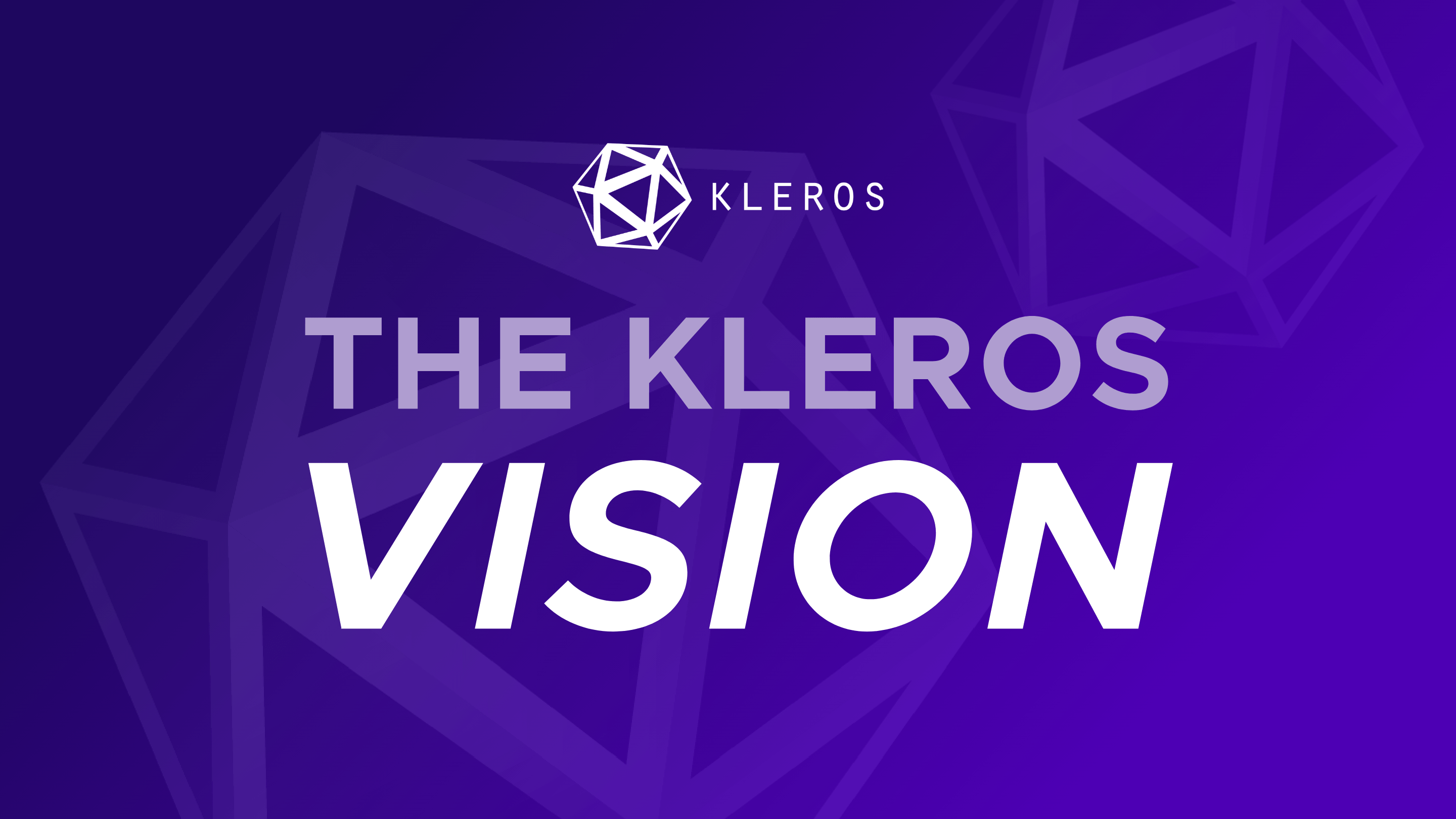
The launch of Kleros 2.0 testnet is a good moment to evaluate where we started, where we are and where we go from here...
I was born in Argentina, a country famous for football and meat. Unfortunately, it's also notorious for economic decline.
Argentinians have lived for a long time under high inflation and poor governance. The Internet came as a blessing for a country offering few economic opportunities to its people. With cheap Internet access, anyone could learn how to code, design or gain other useful skills to offer in the global market.
But that was not enough. Actually getting paid for your job in a country with strong capital controls was next to impossible (you would lose about 50% of your money in taxes and bank fees).
Crypto solved this. Now, anyone in the world had the same opportunities to be paid for their job no matter where you lived: New York, London, Manila or Buenos Aires.
But, what if a dispute arose between a client and a service provider in a different country?
It's obviously too expensive to go to court in another country over a $500 contract for something as simple as a website or a short video. Existing solutions, such as international arbitration, are not suitable to handle small claims across borders.
Establishing an efficient, transparent and enforceable dispute resolution method would be a big step towards worldwide collaboration and equality of opportunity. A system that would empower people based on what they can do instead of where they were born.
What would that system be like? Wow could it resolve the exponentially growing number of disputes of the metaverse age?
When Crowdsourcing Meets Blockchain
Crowdsourcing has been successfully applied in many Internet platforms. The most notable example is perhaps Wikipedia, an encyclopedia built and maintained by an online community. Bitcoin showed us how a network of peers could maintain a ledger to be used as a monetary system.
Could similar principles be applied to produce a transparent and efficient dispute resolution system?
In the past, there had been some experiences with the use of crowdsourcing in the context of dispute resolution. The most notorious example was the Community Review Forum implemented by Colin Rule in eBay. In this system, users would be "jurors" for disputes happening in the platform. Another example was Valve's Overwatch system where gamers resolved claims of other gamers in Counter Strike.
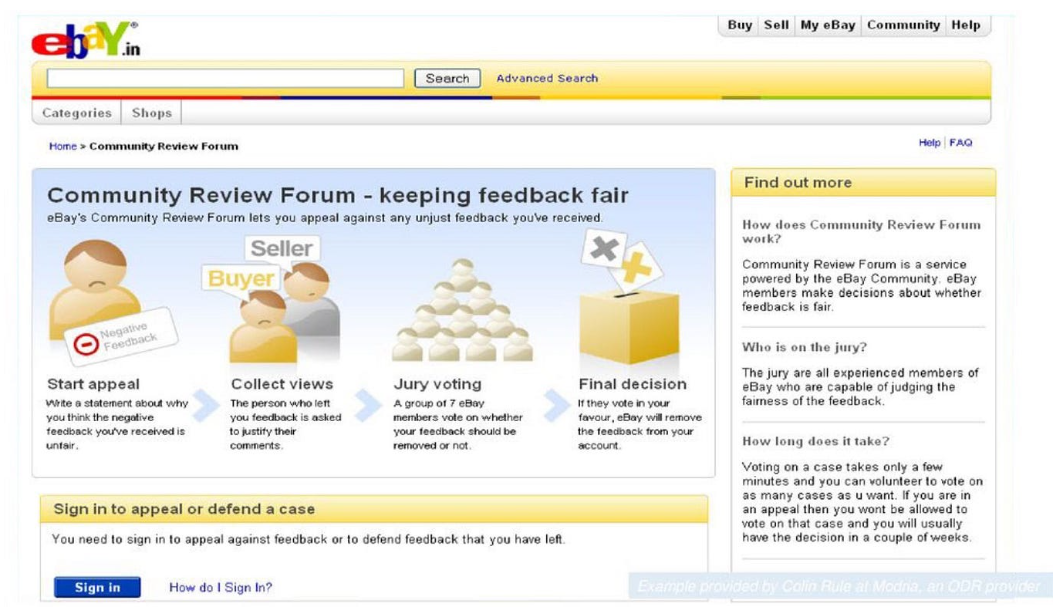
However, these early crowdsourcing initiatives had a problem - they were centralized systems controlled by centralized companies. They lacked the impartiality and transparency one would expect from a dispute resolution system.
Blockchain brought us the immutability of smart contracts and near perfect predictability. A dispute resolution system built as a cryptoeconomic protocol could give all parties certainty in execution. Nobody would be able to tamper with the evidence, the jury selection process or the tallying of votes.
The use of crypto would allow quick and direct enforcement, while crowdsourcing could provide efficiency and decentralization.
These were the early ideas that would become decentralized justice.
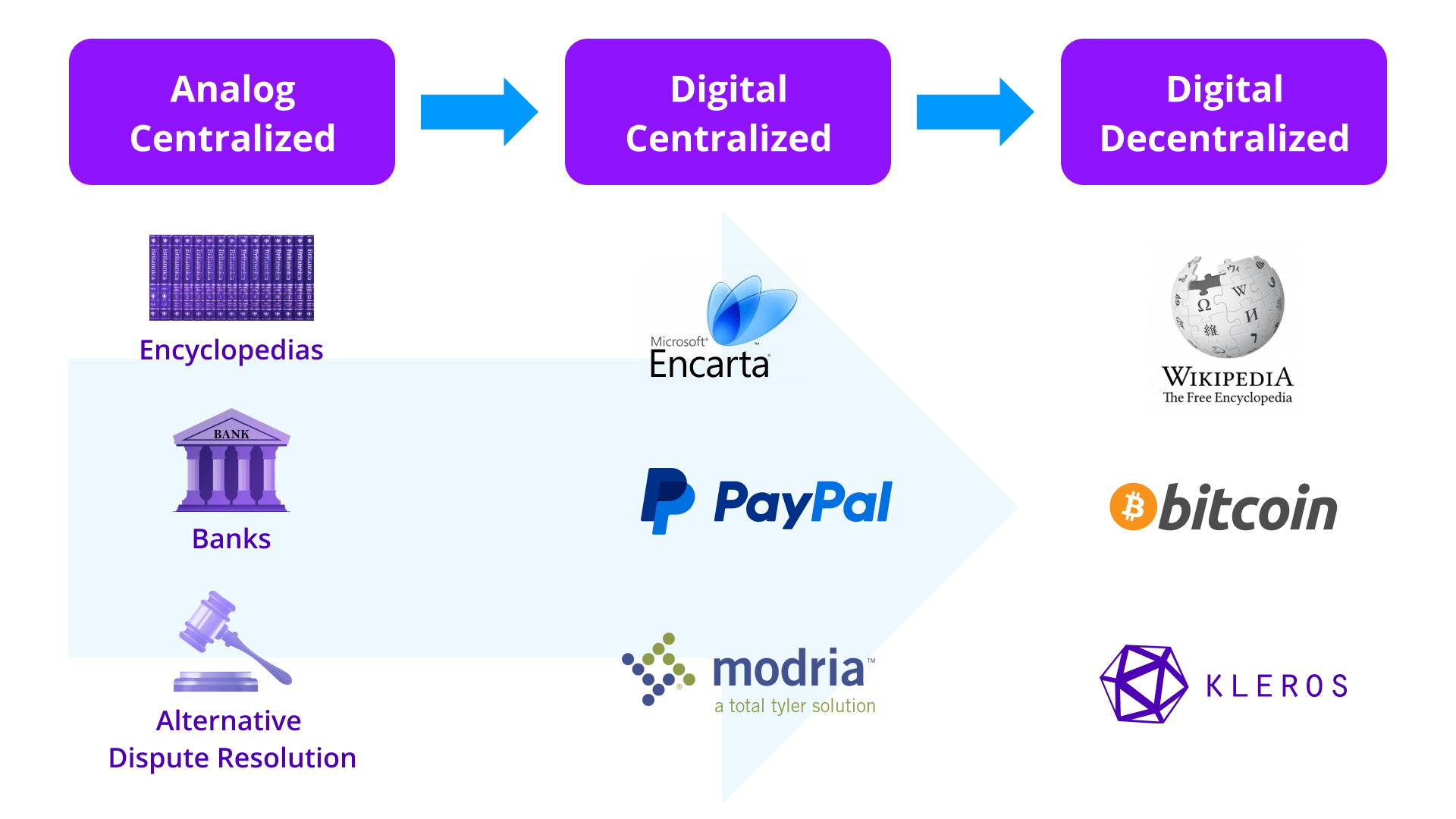
It Begins - a Story in the Metaverse
One day in 2017, I received an email from Susanne, founder of a pioneering project in decentralized governance called Bitnation. She wrote: "I was a juror in a hackathon and there’s a team with an idea like yours. You should meet."
She introduced me to Clément and we started working on Kleros at a distance. We first met in real life about six months later at the Devcon3 conference in Cancún.
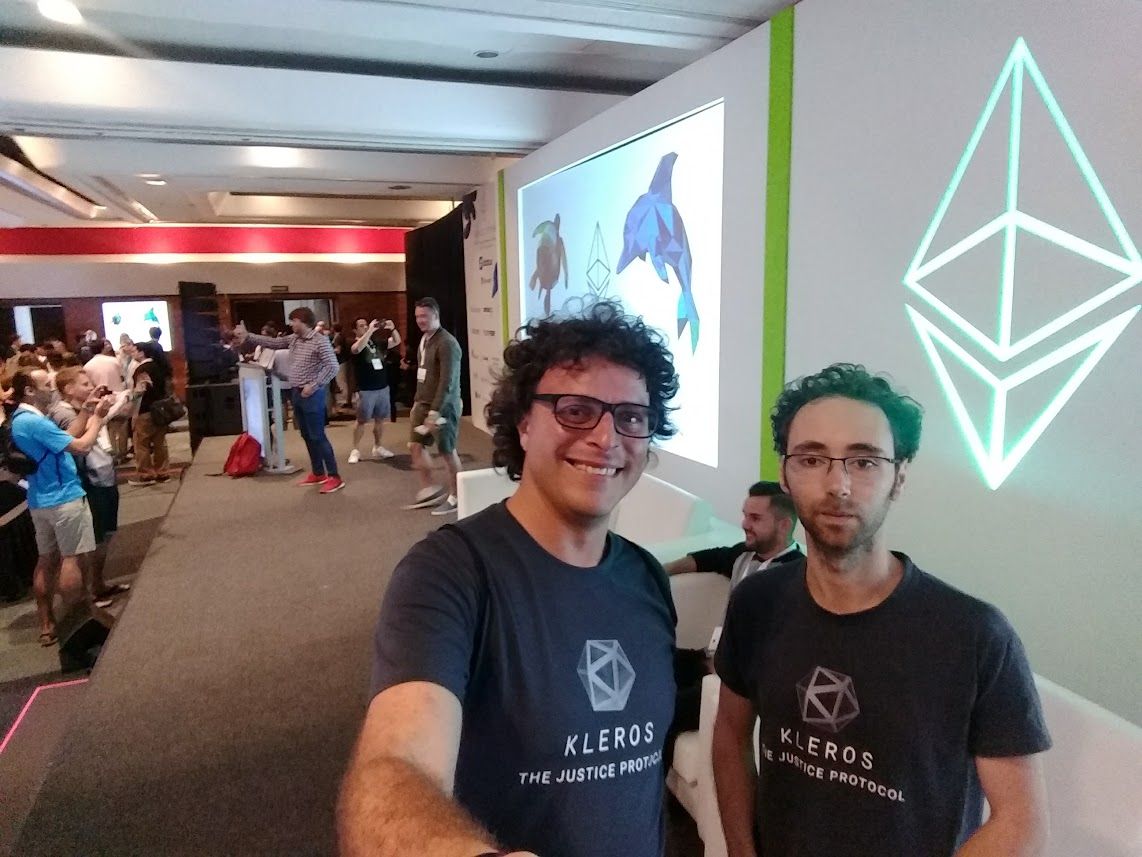
In those very early days of the blockchain revolution, teams were starting to build all kinds of dapps which promised to transform e-commerce, finance, insurance, music and many other industries.
Our vision for Kleros was to create a critical dispute resolution layer that would work across all of Web3 and that would solve claims arising from subjectivity:
- Did the contractor build the piece of software following client specifications?
- Does the token comply with the rules to be listed in this decentralized exchange?
- Was the rainfall in an area below 100mm so to trigger the draught insurance contract?
- Was the wear and tear "reasonable" in the appartment rented in a decentralized rental platform?
Kleros was envisioned as a "decentralized court system" to which any dapp could "plug in" and send its cases for Kleros to produce a transparent decision.
Justice as a service for the decentralized Internet.
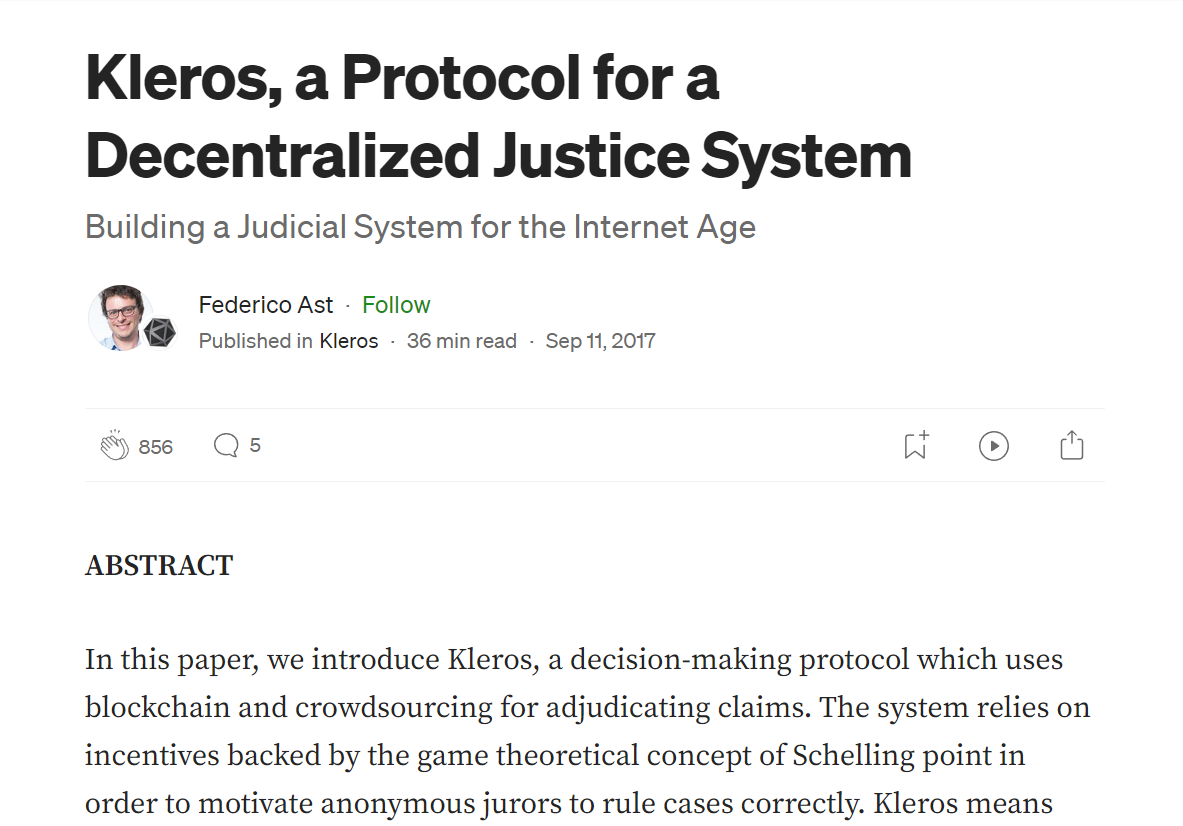
In July 2018, we completed a public token sale, the first one to be conducted with the Interactive Coin Offering mechanism suggested by Vitalik Buterin. (Fun fact: the token sale ended exactly during the second half of the 2018 World Cup final).
The Launch
The first version of Kleros launched on the Ethereum mainnet in July 2018 with a pilot called “Doges on Trial”, a curated list of Doge memes. This was the first time we implemented what some researchers have dubbed “the decentralized sheriff mechanism” where users can challenge non-compliant submissions and then this goes to dispute resolution in Kleros.
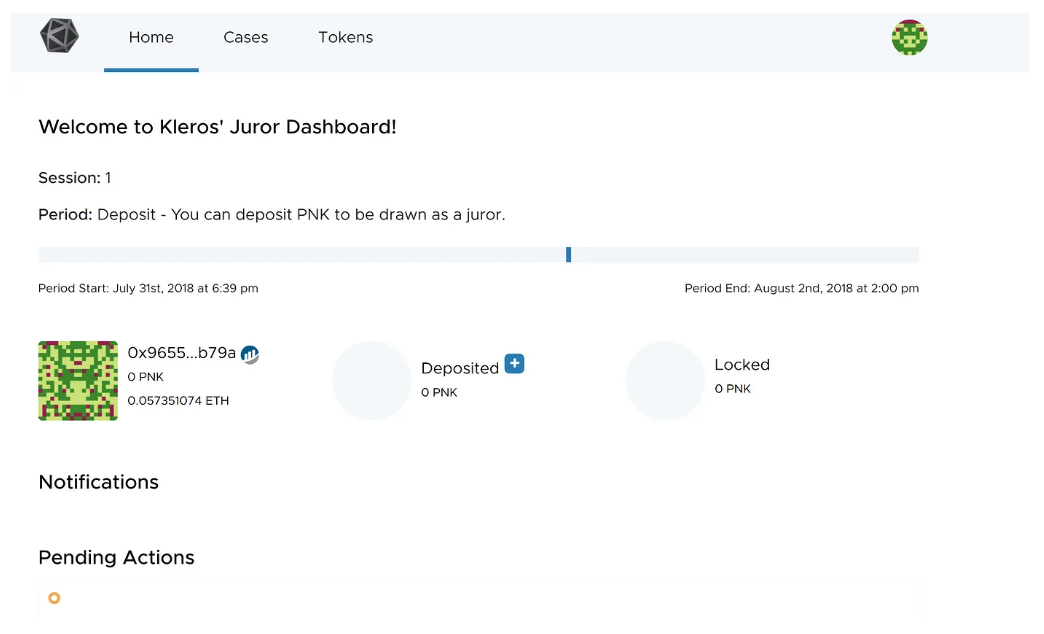
In March 2019, during the EthCC conference in Paris, we launched the Kleros Athena release with vastly increased user friendliness and ease of integration. It was based on a smart contract we called Kleros Liquid. This is what is currently known as Kleros V1.
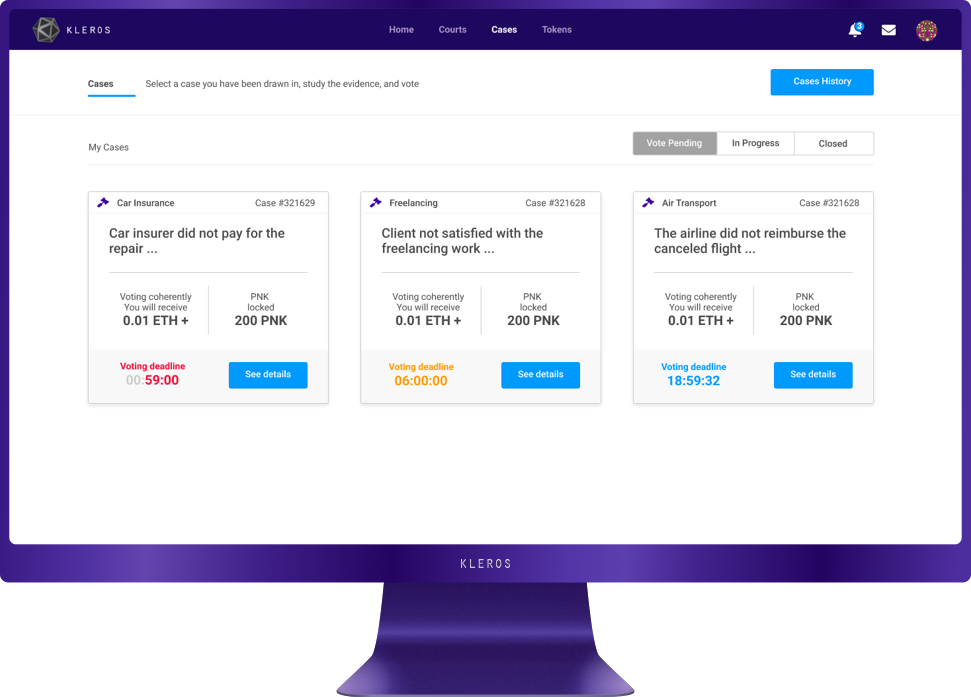
Kleros V1 was built with the tools and the infrastructure available in the nascent Ethereum ecosystem. That version had a number of limitations:
- The deployment was done on mainnet which meant that gas fees were an issue for using Kleros for lower value claims.
- The game theory behind V1 was appropriate for binary disputes but not sophisticated enough for situations where the decision involved ranked choices or other voting methods.
- The lack of an on-chain identity system meant that the whole mechanism had to rely on economic incentives and token based voting.
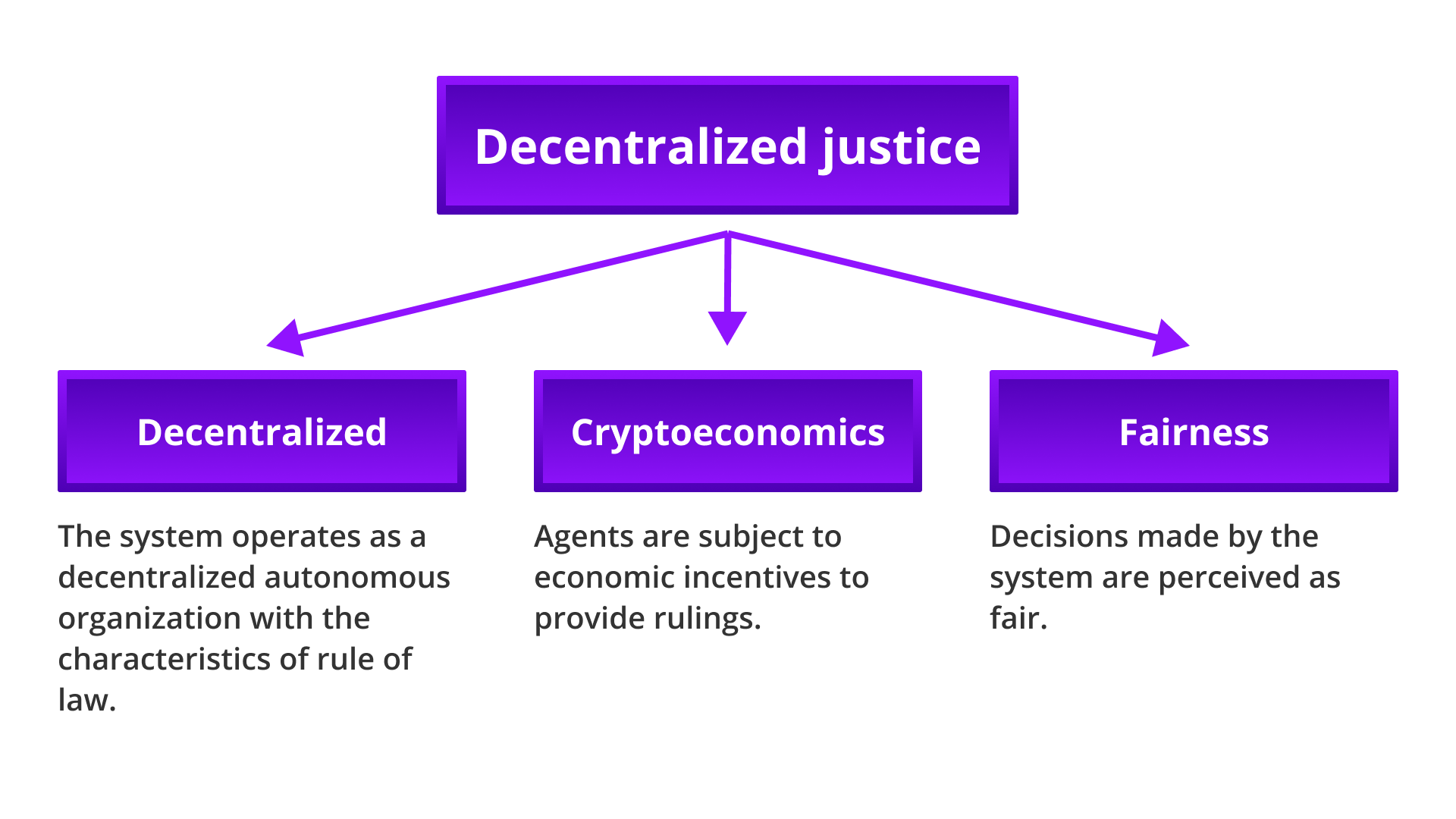
The Research Agenda
Kleros is the first project of a new field dubbed as decentralized justice. Since the early days, we had clarity that lots of research would be necessary to overcome the limitations presented in the previous section.
First, research in cryptoeconomics would be needed to make Kleros more efficient, secure and flexible to address a wider number of use cases. Our research program, under the direction of William George, included the following topics:
- How to securely deploy Kleros on a rollup for higher scalability.
- Implementing ideas from social choice theory to enable new decision making logics.
- Mechanisms to improve the flow of information such as punishing jurors for revealing their votes early.
- An improved forking mechanism.
- More efficient methods for defining court parameters (based on this research, we developed our parameter calculator).
- Courts screened by proof of identity protocols, including the use of soulbound tokens to improve juror selection and enable one-person-one-vote mechanisms.
The research ideas behind Kleros 2.0 are laid out in the Yellow Paper.
Kleros mechanism design was built on token voting, but some use cases require a stable and unique on-chain identity. An important piece of research in this vein is the Decentralized Society paper, published by Glen Weyl, Vitalik Buterin and Puja Ohlhaver which brings to life the idea of soulbound tokens (SBTs).
The combination of Proof of Humanity and soulbound tokens could potentially address a very common requirement of Kleros courts - the ability to draw jurors with some specific skills and with a one-person-one-vote voting logic.
Cryptoeconomics represent just one part of Kleros. We are also innovating in the field of law (and some would say also legal philosophy!). The use of economic incentives in dispute resolution brings a new paradigm and opens many avenues for research in the legal field.
Much of our research is conducted in collaboration with the Paris Center of Law and Economics at Paris 2 Panthéon-Assas University (our researcher Yann Aouidef is doing his PhD there under the supervision of Dr. Bruno Deffains) and BlockchainGov (our researcher Jamilya Kamalova is doing her PhD under the supervision of Dr. Primavera De Filippi).
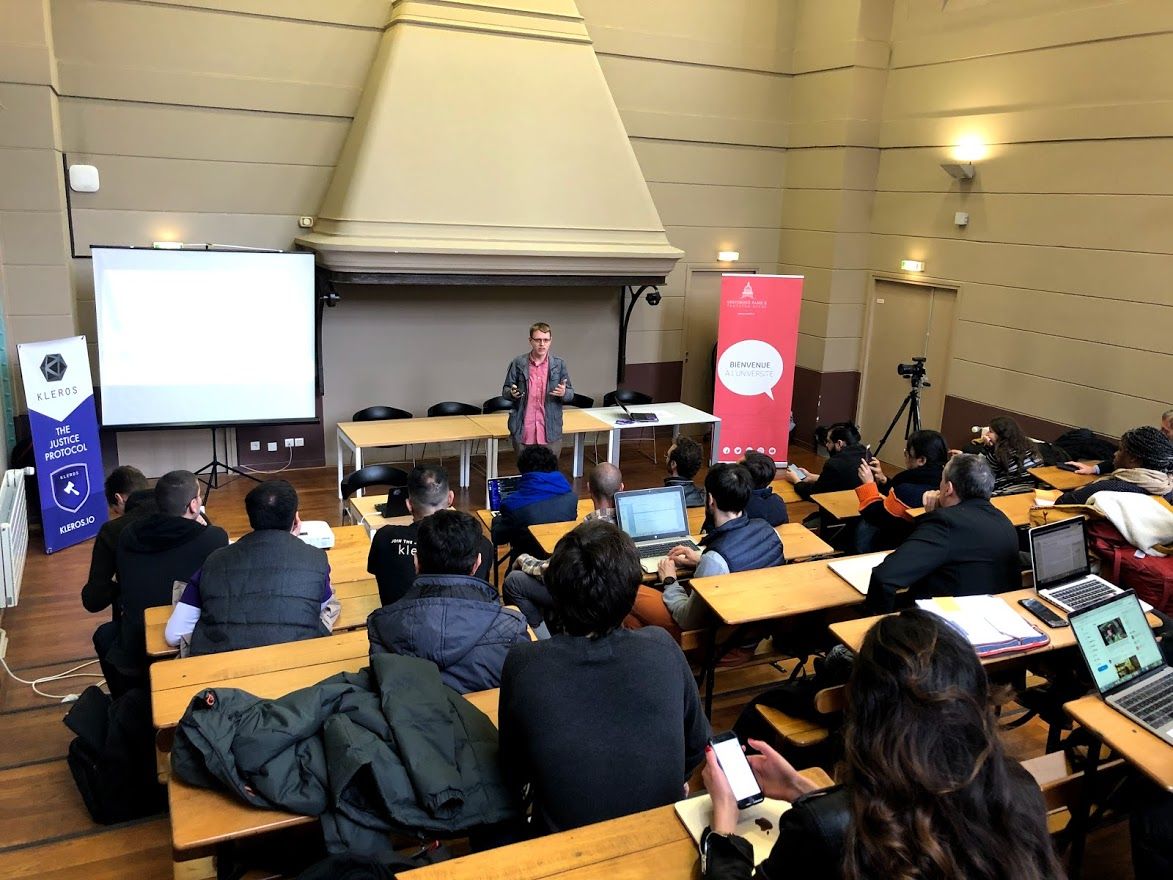
A great working session and discussion on the challenges of DAO governance at the Center for Research on Administrative and Political Sciences! 🇫🇷🙌 pic.twitter.com/m1igBm2yxf
— Federico Ast (@federicoast) July 19, 2022
An important element in our research strategy was the launch of the Kleros Fellowship of Justice program in 2018 which helped us start a community of researchers and practitioners contributing to the development of different aspects of Kleros.
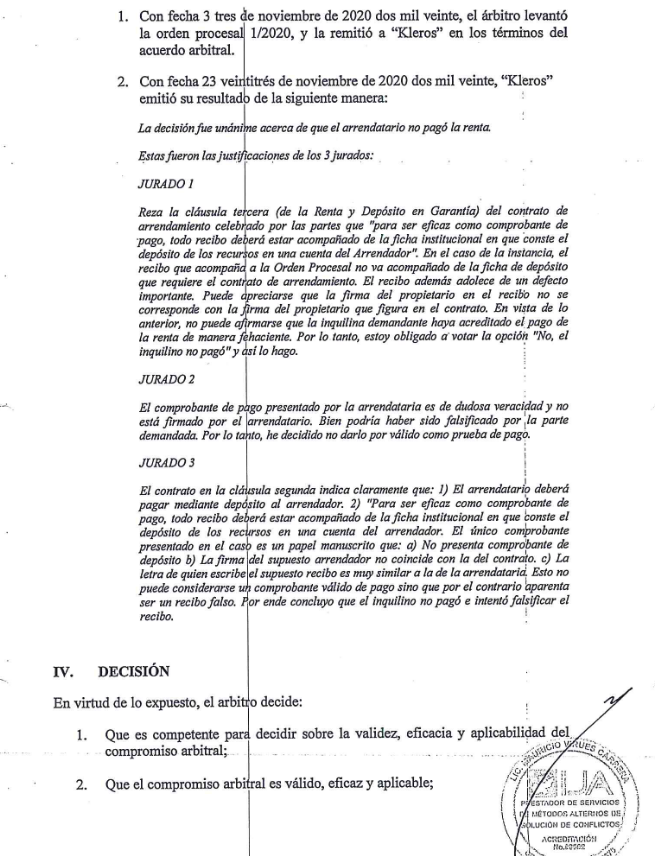
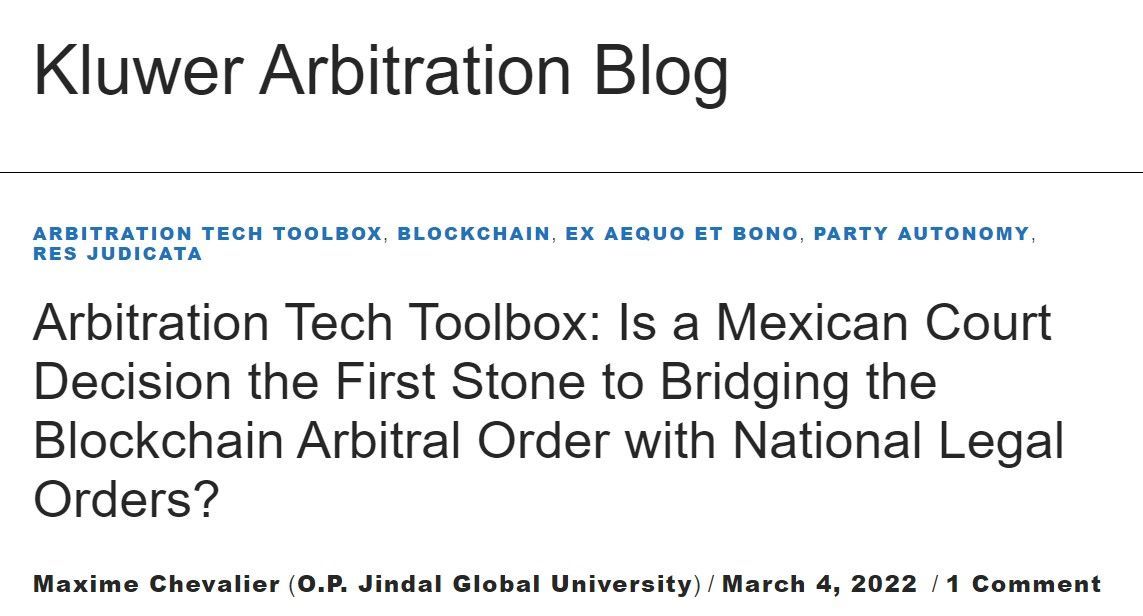
Research papers published by members of Kleros:
When Online Dispute Resolution Meets Blockchain: The Birth of Decentralized Justice. Stanford Journal on Blockchain Law & Policy.
A Smart Contract Oracle for Approximating Real-World, Real Number Values. International Conference on Blockchain Economics, Security and Protocols.
An Analysis of p+ε Attacks on Various Models of Schelling Game Based Systems. Cryptoeconomic Systems.
Strategic behaviour and manipulation resistance in Peer-to-Peer, crowdsourced information gathering. Mathematical Social Sciences.
An Analysis of Griefs and Griefing Factors. Frontiers in Blockchain.
Decentralized Justice: A Comparative Analysis of Blockchain Online Dispute Resolution Projects. Frontiers in Blockchain.
Decentralized Justice: A Comparative Analysis of Blockchain Online Dispute Resolution Projects. Frontiers in Blockchain.
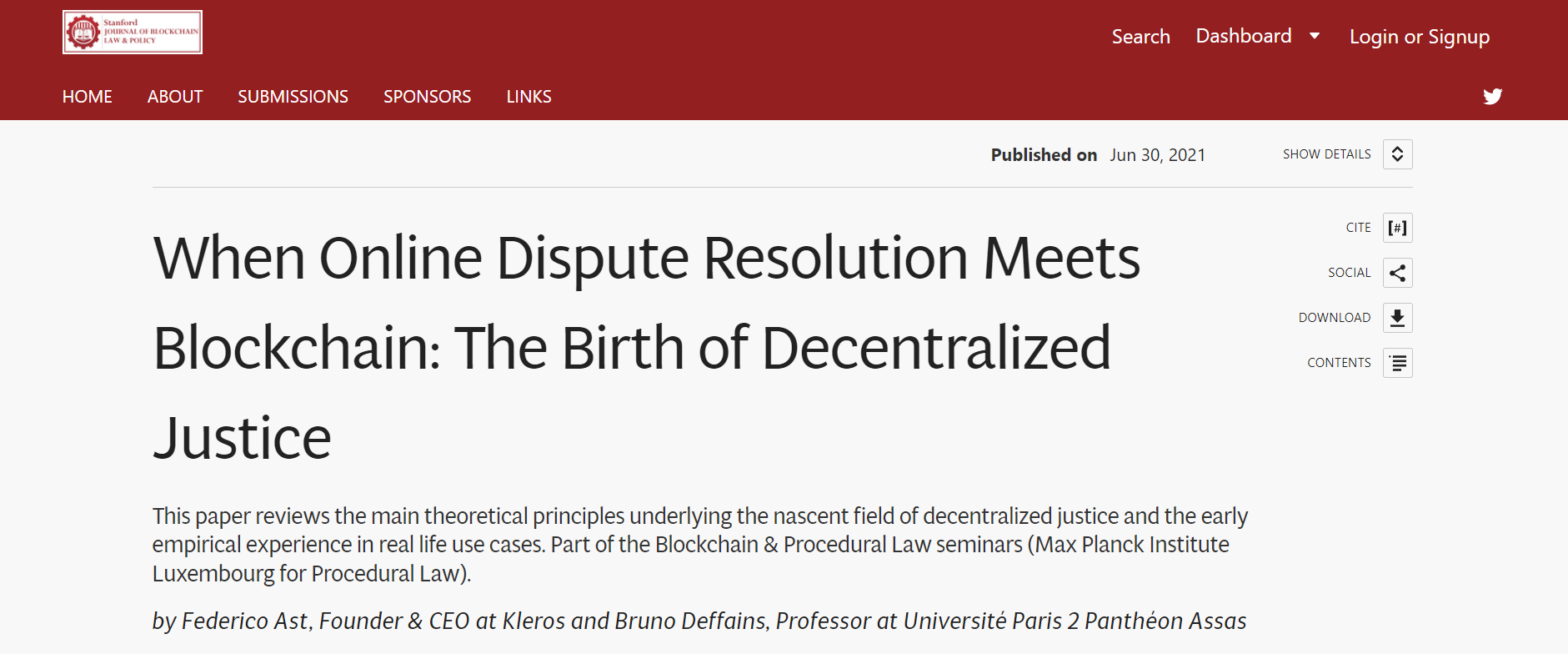
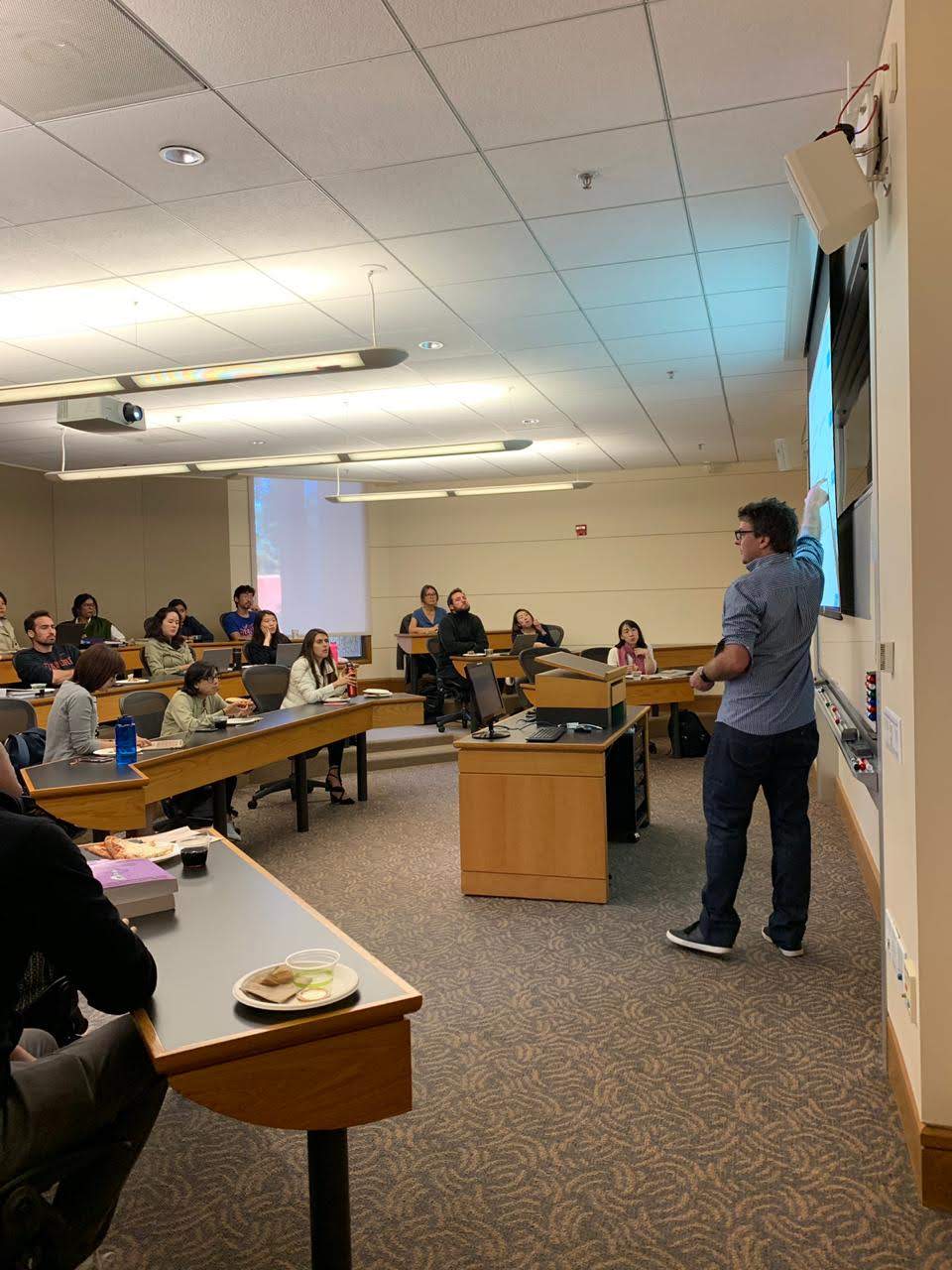
Honored to have presented @Kleros_io at Harvard! 🙌🙌🙌 https://t.co/XTNQPu6z9W
— Federico Ast (@federicoast) April 5, 2023
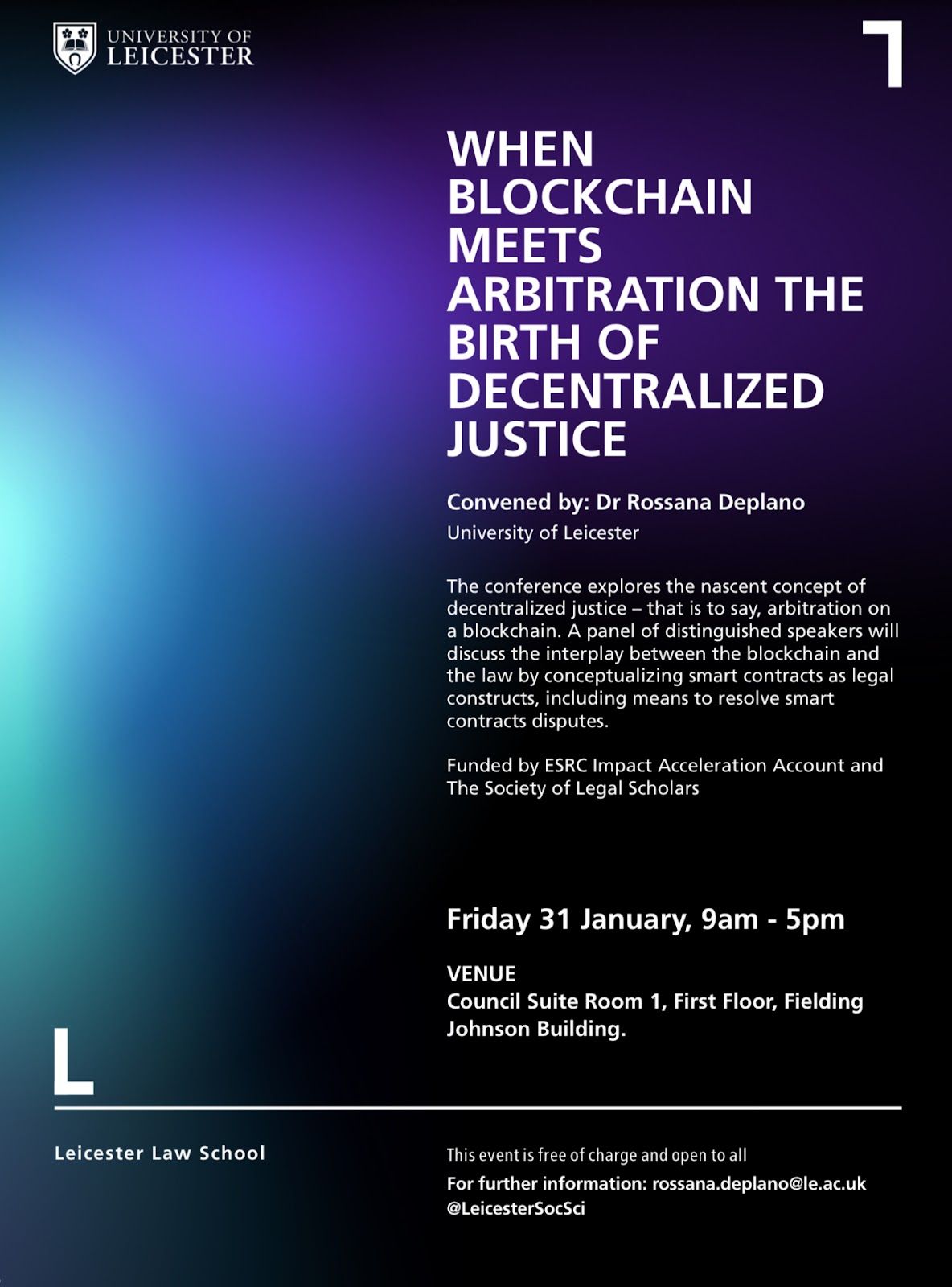
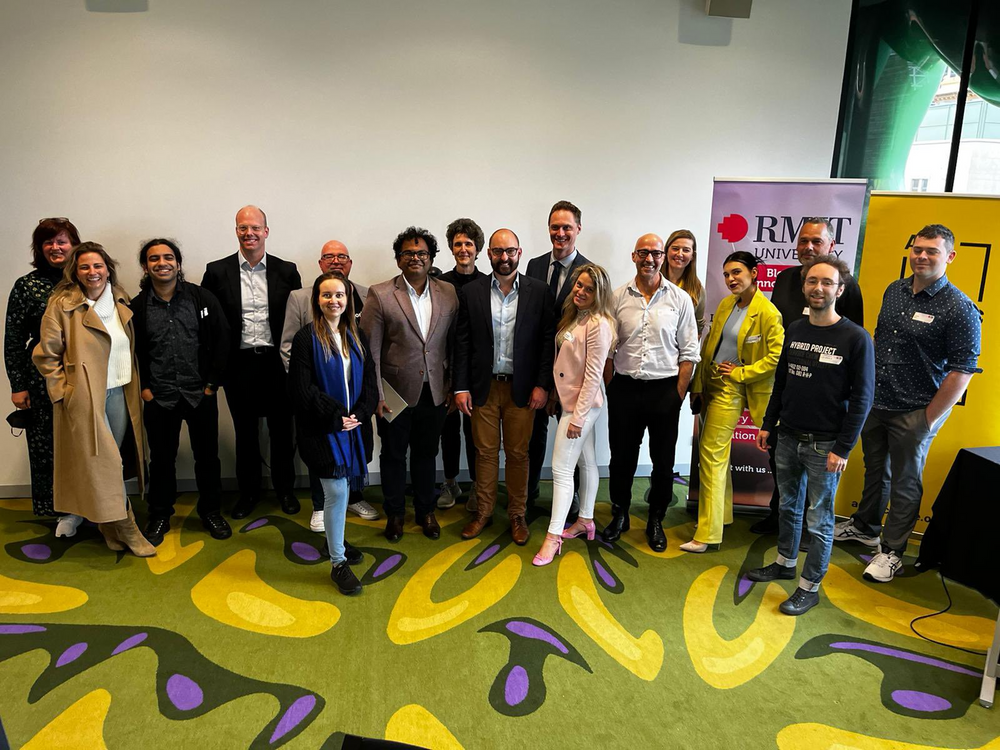
Building Legitimacy
In the field of social technology, it's not enough to build things that work. Users trust is also essential, hence, in order to be adopted, Kleros has to build legitimacy.
Since the early days, we sought to collaborate with respected entities from the world of law, business and academia. We were accepted to the Thomson Reuters Incubator (probably the most prestigious incubation program for legaltech companies at that point), we received funding from the French innovation bank BPI and won the Horizons 2020 prize from the European Union.
.@Kleros_io, one of the latest startups to join the Thomson Reuters Incubator program, recently presented at Crypto Consensus 2018. Be sure to watch their full presentation here. https://t.co/R9XppoPFJv
— Thomson Reuters (@thomsonreuters) May 22, 2018
⚖️🥳Incredibly proud to announce that Kleros has been awarded the European Commision's Horizon 2020 Blockchains for Social Good Prize!
— Kleros (@Kleros_io) June 30, 2020
Check out the details below! 👇 https://t.co/LQ8a33dAMG
We also engaged with many professional institutions to spread the word of decentralized justice. We presented at the United Nations Commission on International Trade Law (UNCITRAL), the Hague Conference on International Private Law, the Technology Patent Network, the World Intellectual Property Organization (WIPO), the Paris Arbitration Week and many more.
With these interventions, the team started to contribute to shaping the regulatory framework of the future of dispute resolution.
Check my presentation on decentralized justice at the recent CODIFI event of the @HCCH_TheHague Hague Conference on International Private Law! 😎https://t.co/Z3jvBYwh9L
— Federico Ast (@federicoast) October 17, 2022
Happy to have presented @Kleros_io approach to NFT certification in the "@WIPO Conversation on Intellectual Property and Frontier Technologies" at the World Intellectual Property Organization. 🚀🚀🚀 pic.twitter.com/HmBtCmfD10
— Federico Ast (@federicoast) April 6, 2022
Today, Kleros was at the @UN 🌎 https://t.co/9Yb1gE79ye
— Kleros (@Kleros_io) March 29, 2022
Of course, we also participated and presented regularly in the relevant industry conferences from the Web3 ecosystem including Devcon and EthCC.
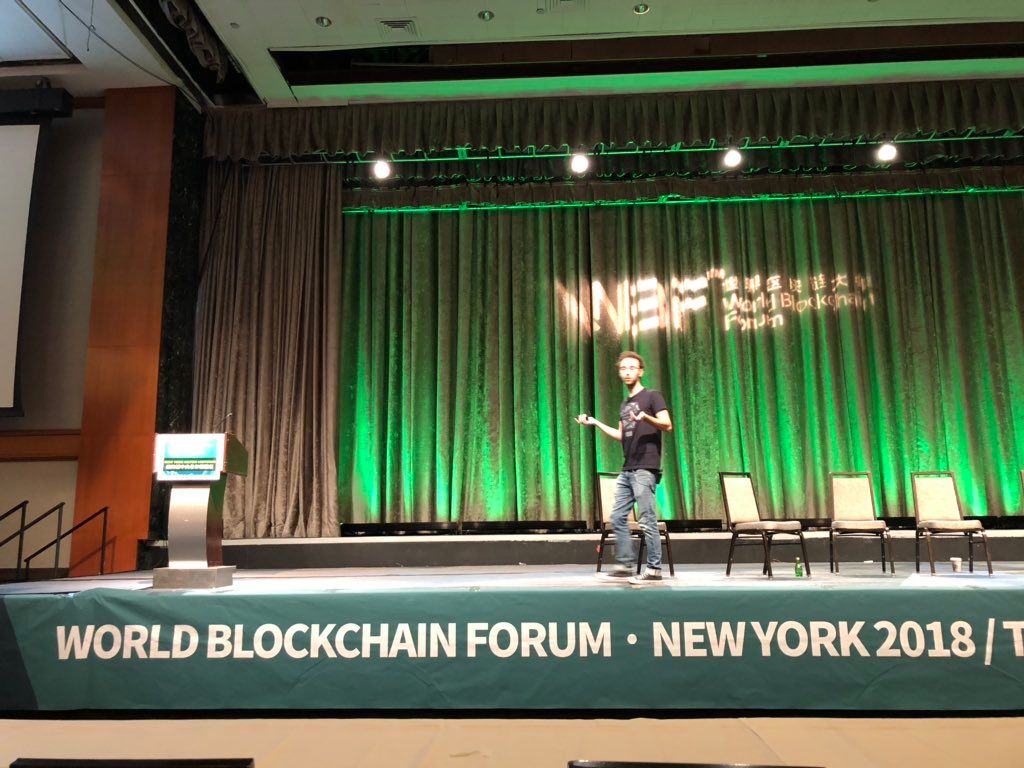
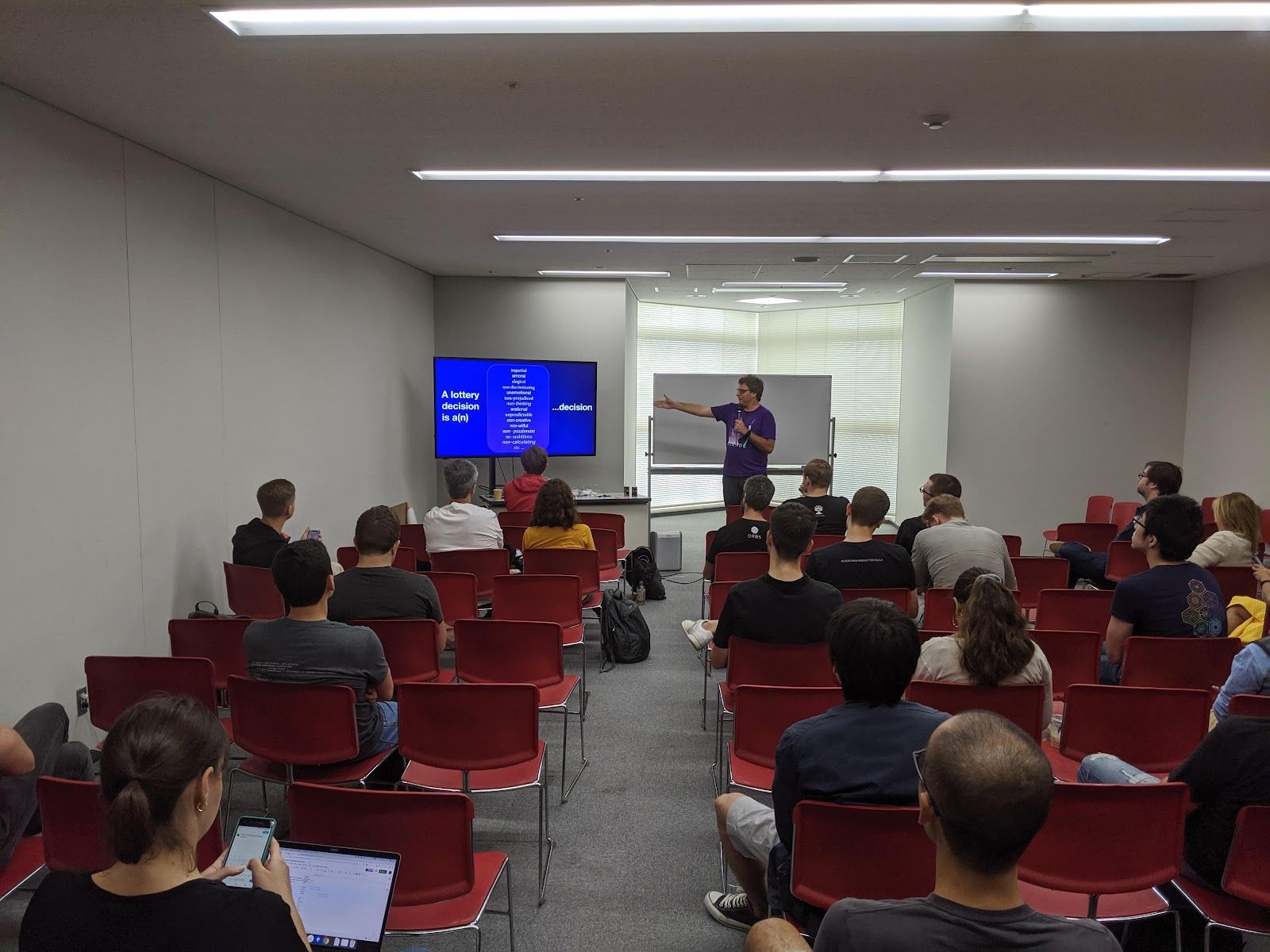
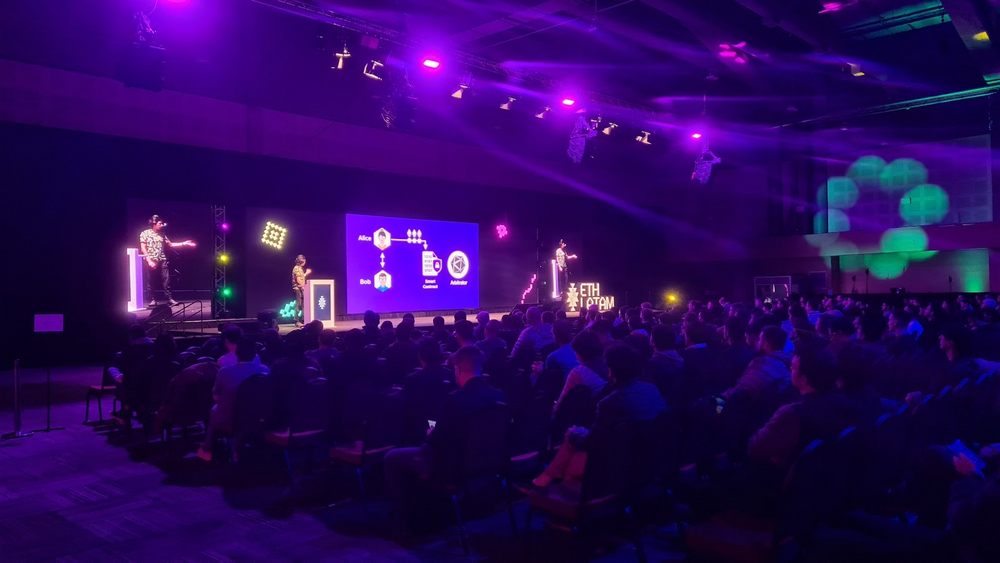
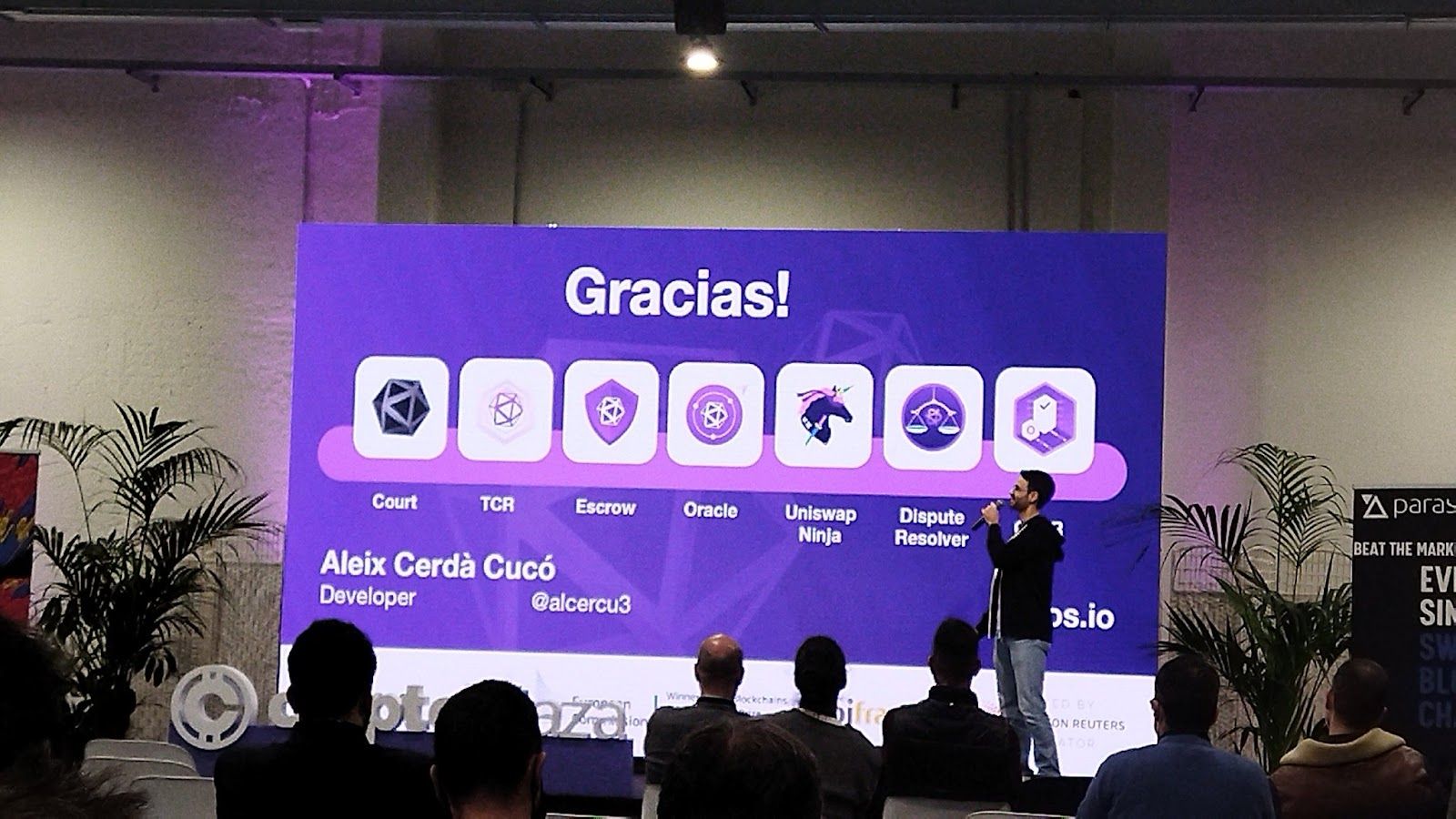
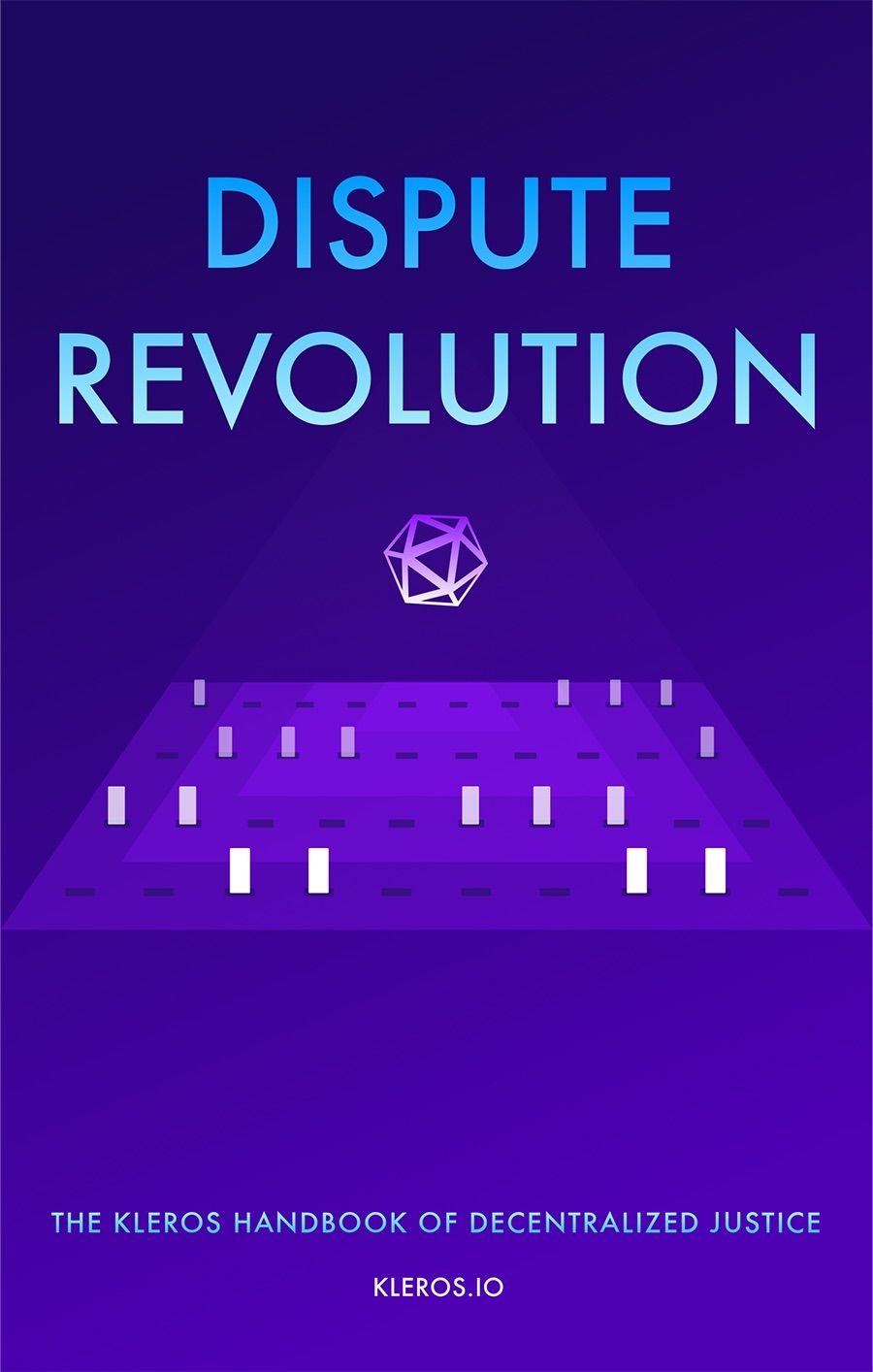
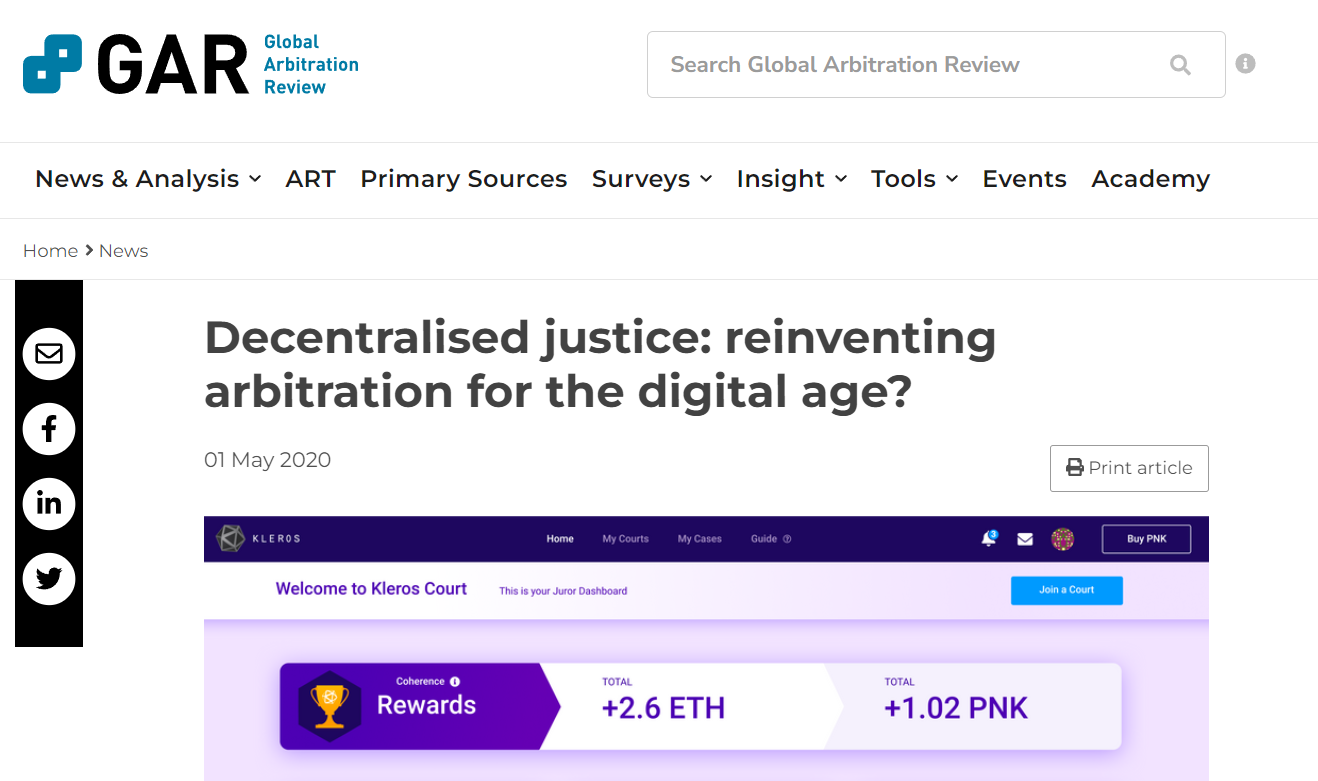
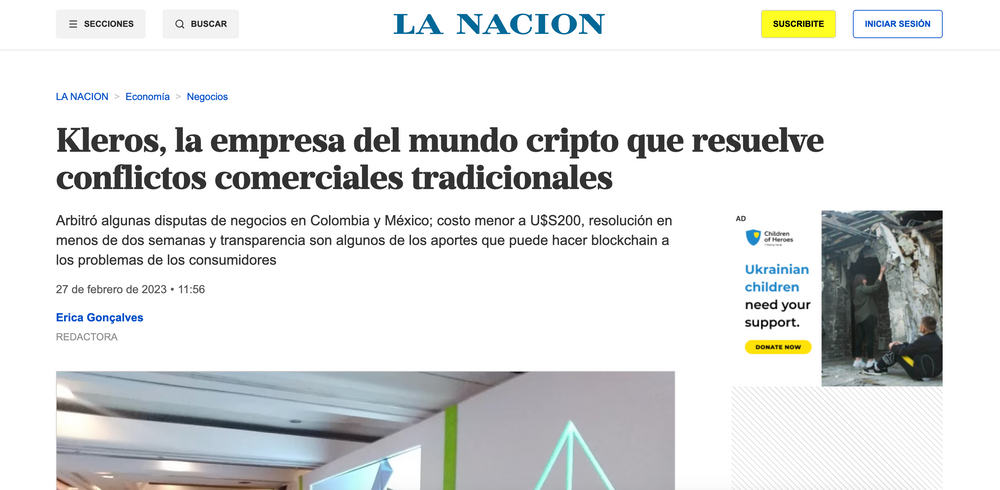
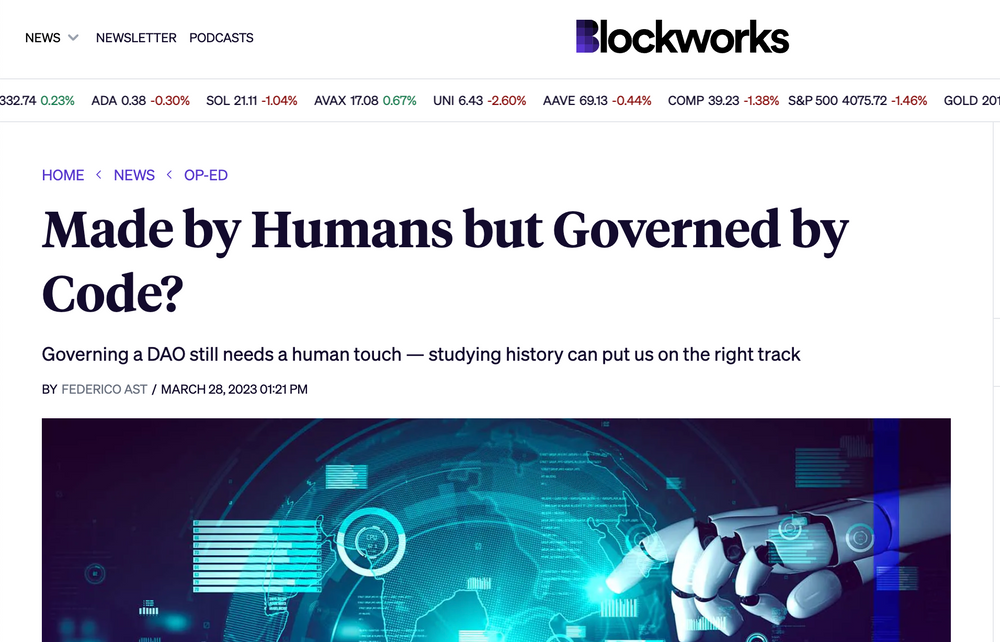
An Evolving Ecosystem
In the early days of Kleros, we typically presented the case of Alice and Bob and a freelance service contract. As the project moved forward, we developed a wider number of use cases.
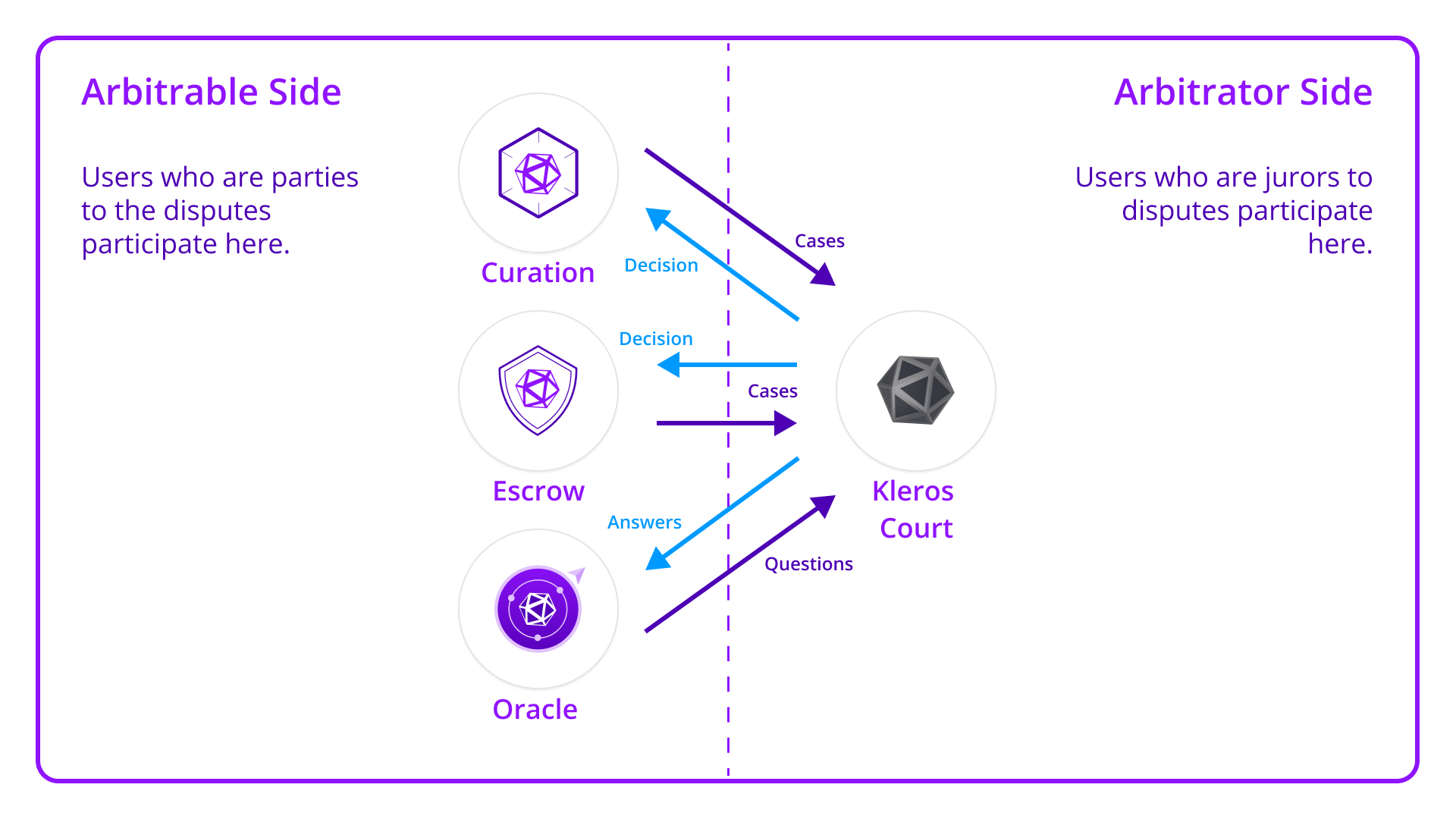
Our overall goal was to enable as many third party Web3 apps (the "arbitrable" side) as possible to be able to adopt Kleros (the "arbitrator" side) as a place of resolving disputes.
Part of this strategy also involved the creation of "showcase apps" to show how integrations work in a number of use cases: Escrow for buying/selling goods and services, Linguo for translations, Proof of Humanity for identity verification, Curate for different types of curation and Moderate for content moderation.
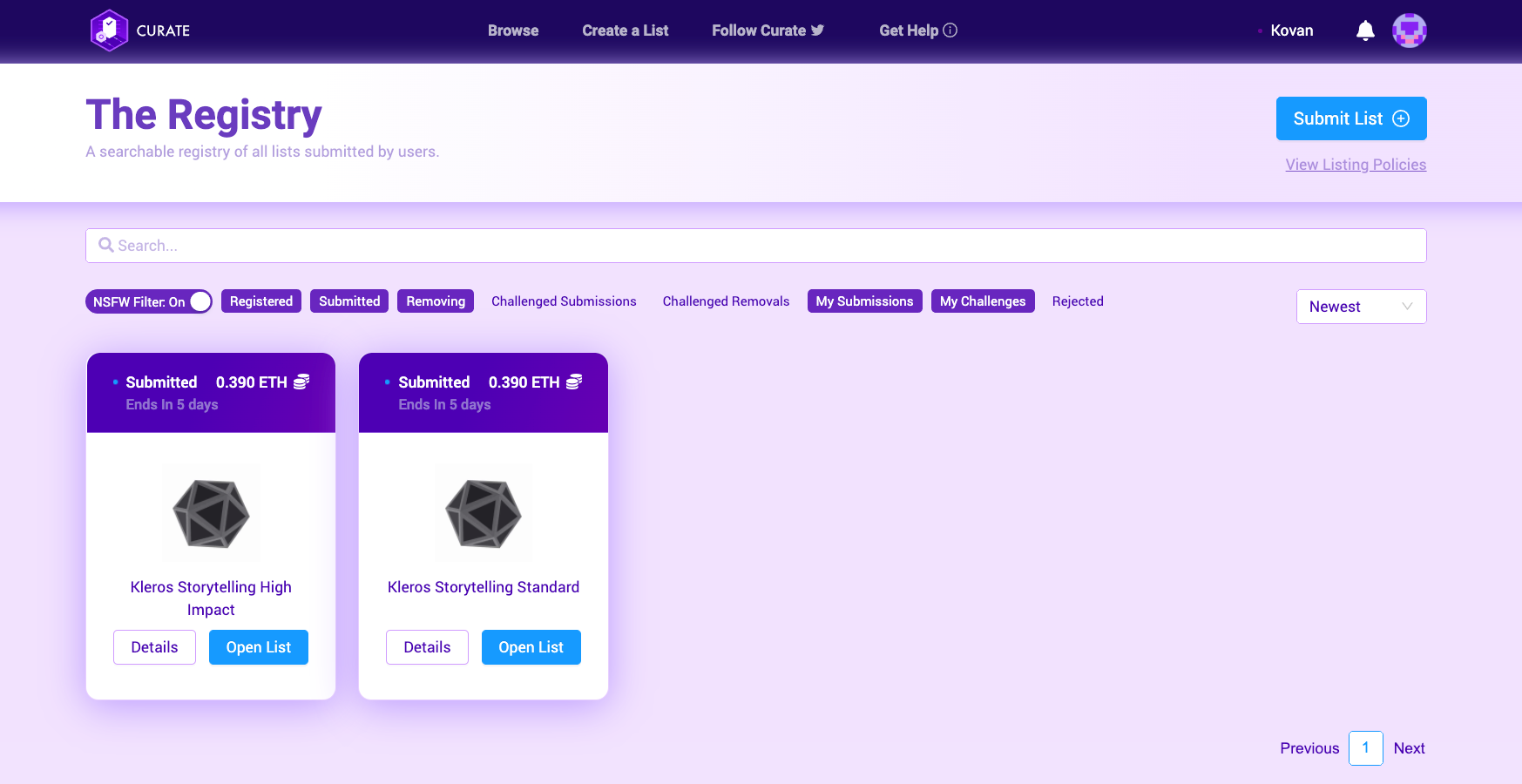
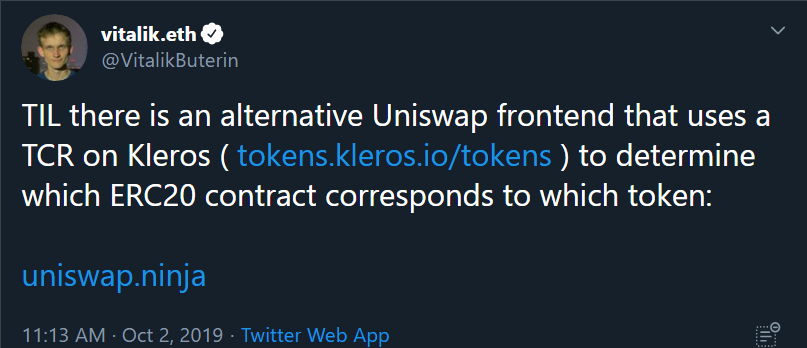
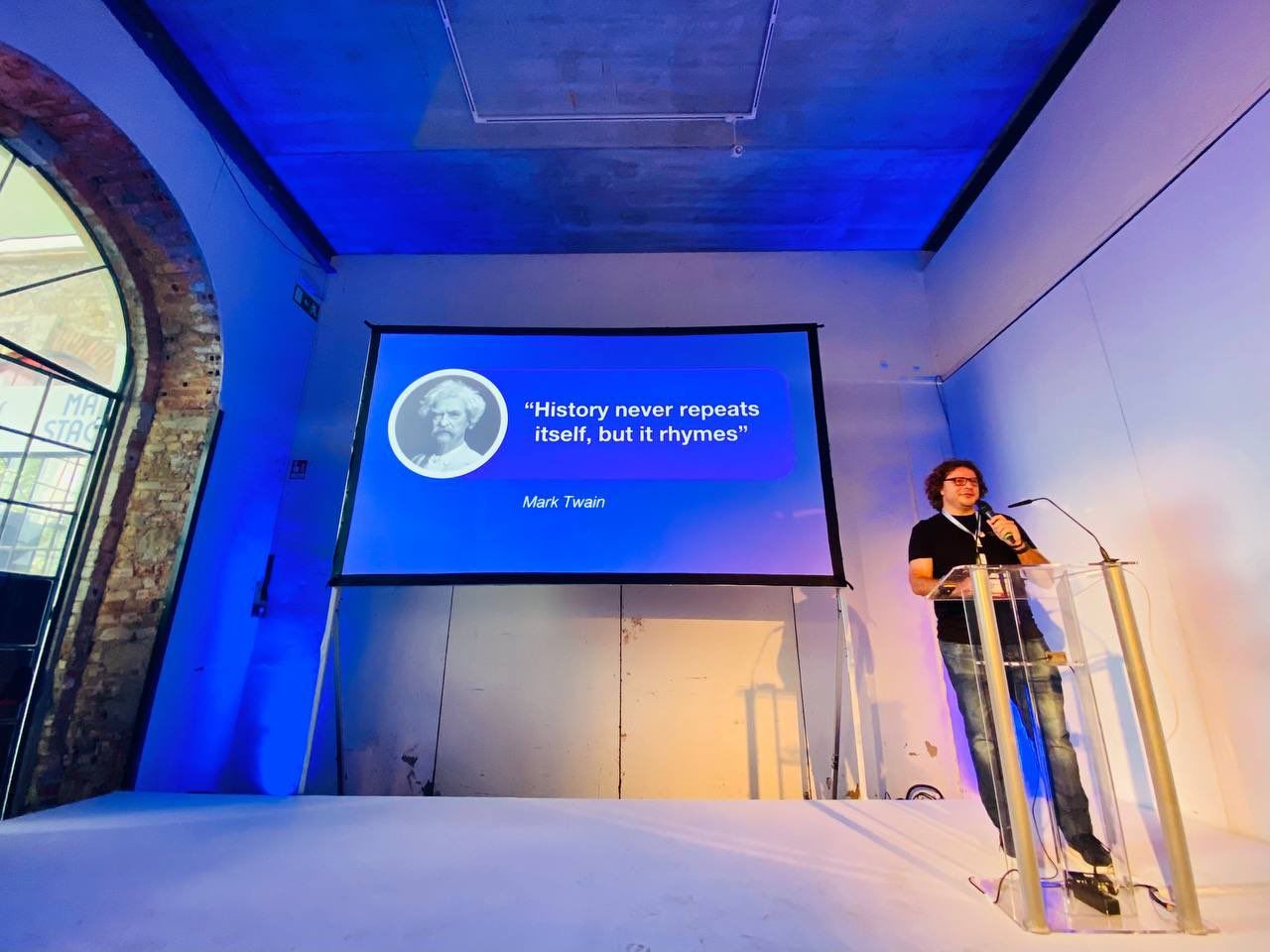
Many of our talks in conferences are about presenting new use cases for Kleros and finding partners to implement them.
We launched an incubator for supporting projects building in the Kleros ecosystem.
Great session on @Kleros_io and building Web3 projects with @Wharton MBA students at @TheBlockLisboa! pic.twitter.com/QjL4llVCRd
— Federico Ast (@federicoast) March 10, 2023
A work session at the Paris Center of Law and Economics at Assas on how to use Kleros for justice inclusion in Venezuela. With @AouidefY @Luis_Bergolla @robertohungc 🇻🇪 pic.twitter.com/AgRQyS4qnI
— Kleros (@Kleros_io) April 8, 2022
The collapse of Terra Luna allowed Kleros to showcase its capabilities as a claims arbitrator for the DeFi insurance industry. Over 5400 ETH in claims were secured with over 20 claims coming to Kleros for appeal.
The team made an important push into the identity and credentials space, and increased the number of identity partners integrating Proof of Humanity to over 20, including projects such as Gitcoin Passport, Lens Protocol, Noox, Sismo, CyberConnect, and EtherScore.
The team also made significant progress in token-curated data integrations. In particular, the address tag and contract domain name registries built with Kleros Curate gained significant adoption in the wallets and explorers space.
Ledger, Etherscan, MyEtherWallet and Alphawallet have all signed up to use the crowdsourced data from these registries for their consumer-facing products, with many more in the pipeline.
All the work done in integrations can be seen in the growth of the Kleros ecosystem.
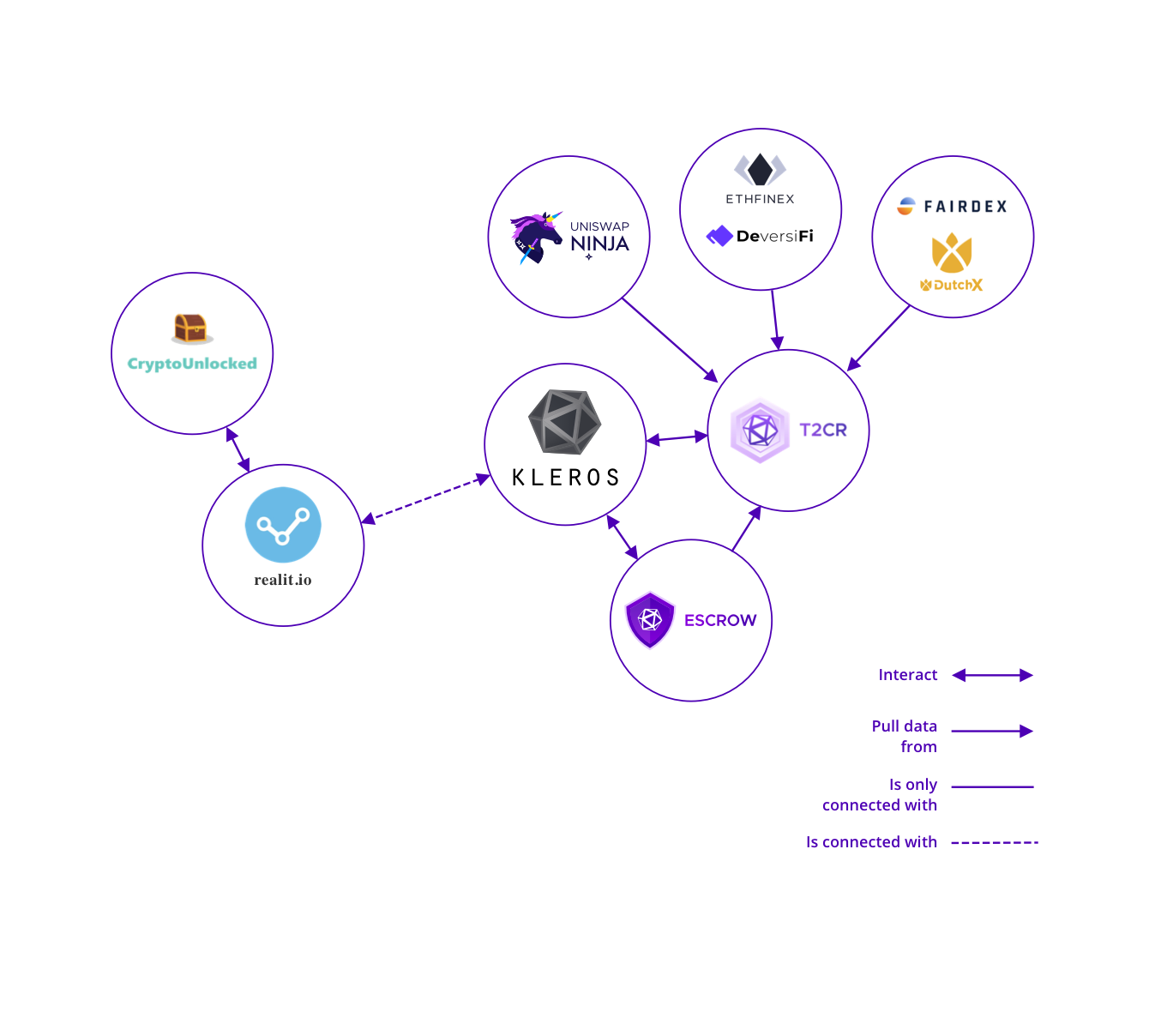
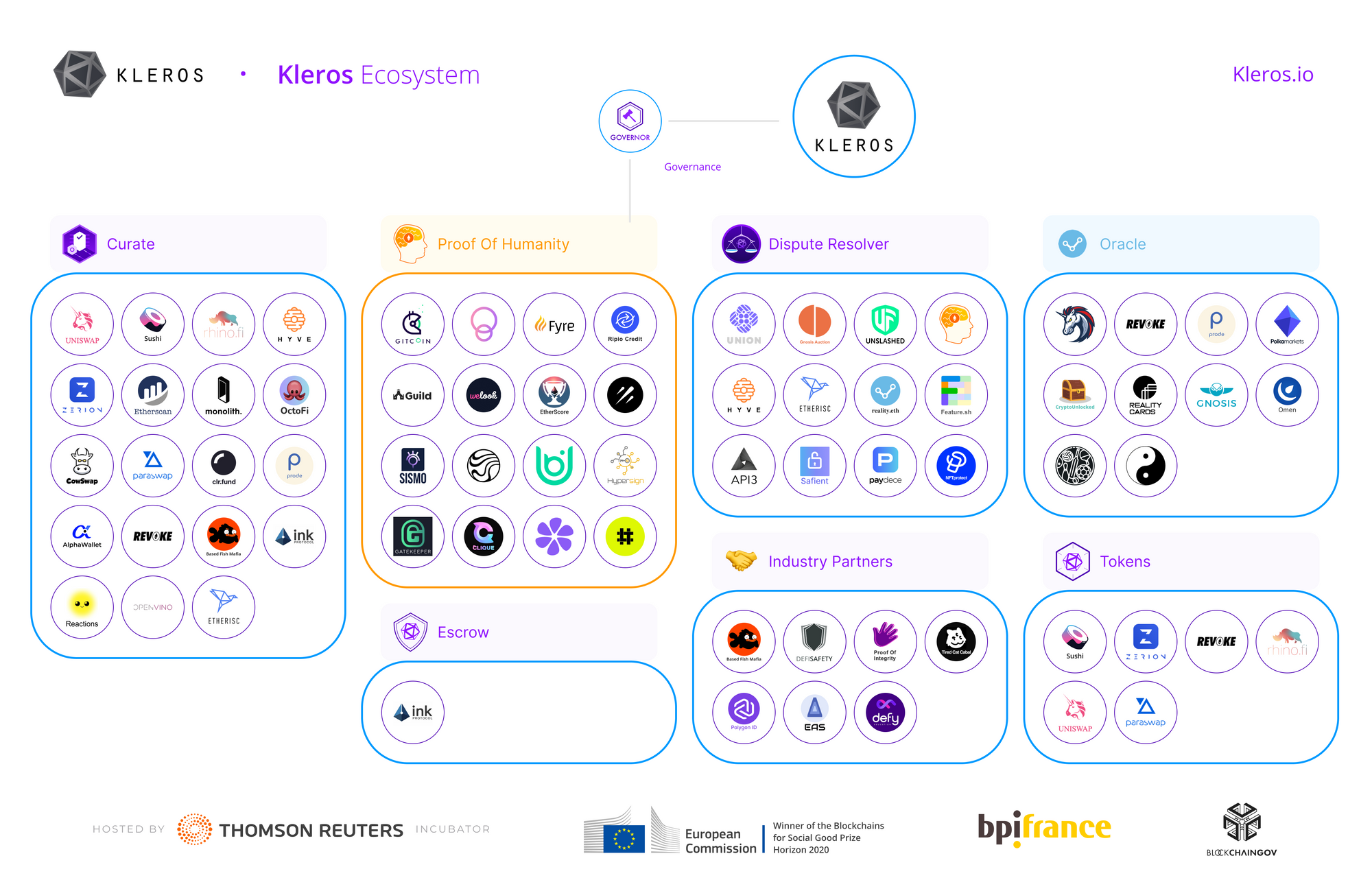
Since Kleros started in 2017, the world of technology evolved. We have seen the rise of the DeFi ecosystem, of NFTs, decentralized social media, the metaverse and AI. What connects all of these novelties is the need for a dispute resolution layer with human intervention.
As the ecosystem keeps evolving, we will certainly see more integration use cases.
Based on all of our market experience and research, we learned that some features were necessary for adoption:
- More chains.
- Lower costs to address lower value cases.
- More sophisticated decision making logic.
- Courts with verified profiles and SBTs for jury composition.
These are exactly the problems Kleros 2.o aims to solve.
Kleros 2.0: Technical Elements
Kleros 2.0 is the result of four years of research and development. Here are the main elements.
Cross-Chain
When Kleros started, Ethereum L1 was almost the only game in town. This made Kleros dispute resolution quite expensive because of gas fees. Kleros 2.0 leverages the advantages of a new ecosystem of rollups to become cross-chain and way more efficient.
The new court lives on a "home chain", an EVM compatible rollup, which provides the adequate trade-off between security guarantees and transaction costs. It's capable of passing rulings to arbitrable contracts living on other, "foreign chains", starting with Gnosis chain and then Ethereum Mainnet for backward compatibility with the existing integrations.
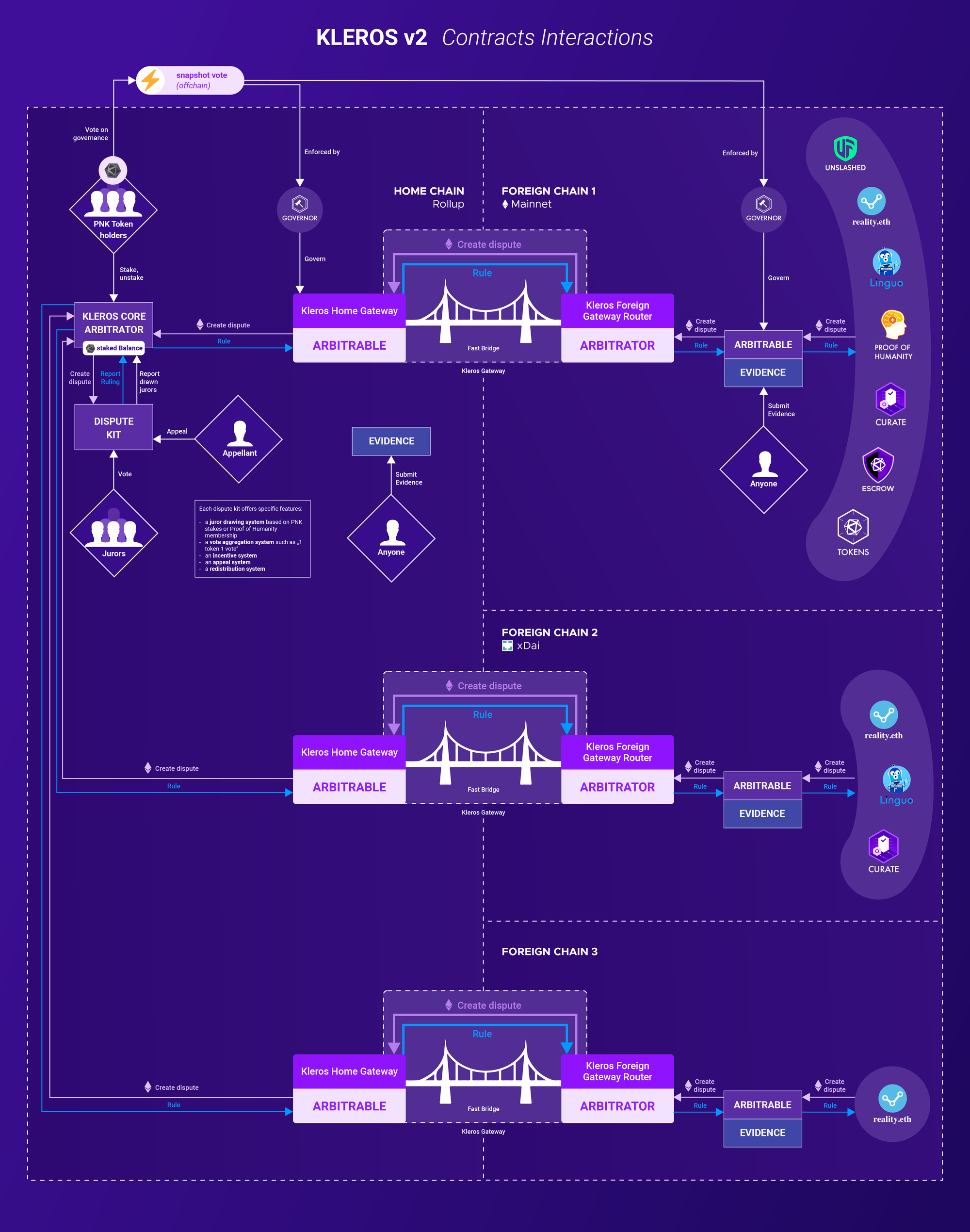
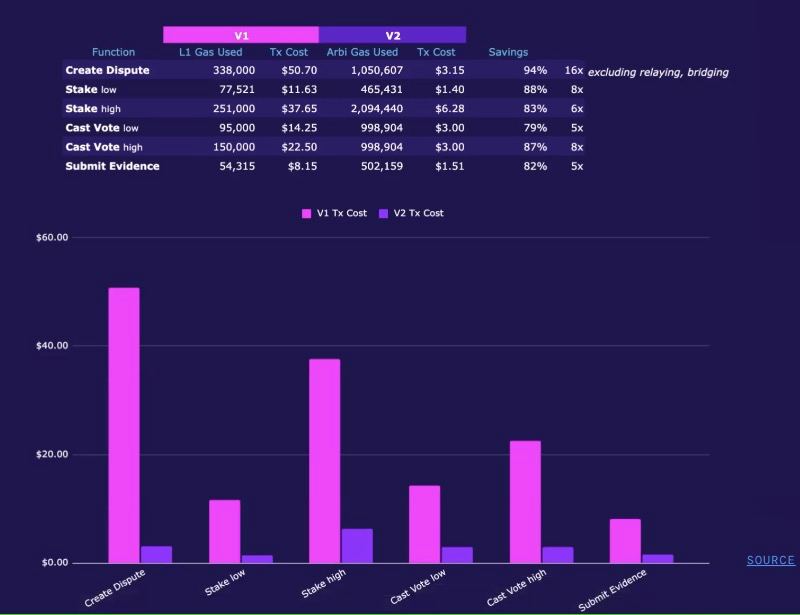
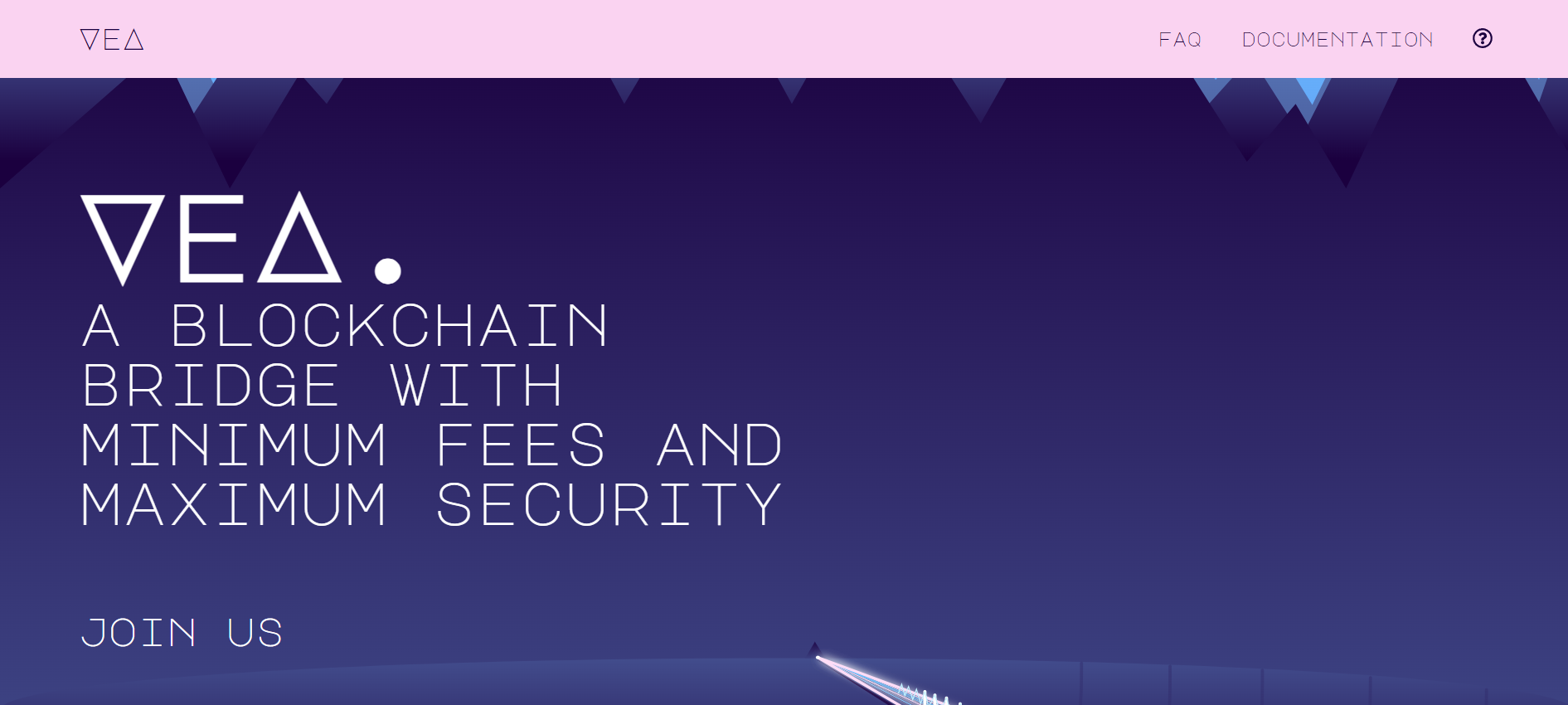
Modularity
Kleros 2.0 supports adding new modules that enable new features and functionalities without requiring changes to be made to the main court contract. These modules add different functionalities (such as different jury selection, vote aggregation, anti-griefing mechanisms, types of answers, appeal fee models and crowdfunding) and new protocols (Proof of Humanity, quadratic voting).
Kleros 2.0 comes with embedded with "dispute kits" which manage a number of functions:
- The drawing of jurors (via delegation to the Sortition Module, see below).
- The casting and tally of votes.
- The appeal mechanism.
Some examples of innovations enabled by dispute kits:
- New constraints on drawn jurors, for example by deduplicating addresses (1 address, 1 vote).
- A new hidden voting mechanism, for example with an MPC network like Shutter or with some ZKP.
- New ways of tallying votes, for example WoodSIRV (aka Condorcet-IRV) as described in the yellow paper.
- New appeal funding models as described in the yellow paper. For example, fund 2 options or more, then vote only the funded options (whereas currently we require the funding of exactly 2 options, then every option is available for voting in the next round); fund only 1 option and stake on a custom set of options.
The sortition module manages:
- The tracking of stake changes in the court hierarchy.
- The drawing of jurors.
- The automatic unstaking of inactive jurors (such as jurors who didn't vote when drawn).
- Interactions with a random number generator (aka RNG).
The evidence module manages the submission of evidence. This enables smarter handling of submitted evidence by possibly adding moderation signals, typically to signal low quality/spammy evidence (the frontends remain free to display the evidence as they like).
Kleros 2.0 will support specific functionalities to become available as a dispute is appealed to another round. For example, cases in the first round in some specific court may use a system of 1 user/1 vote (based on Proof of Humanity), while the next round may use 1 token/1 vote.
Fork Friendliness
Kleros 2.0 makes it easier to quickly coordinate and execute a fork to significantly reduce the payoffs of an attack on a dispute or on the governance process (to paraphrase Vitalik). When a fork takes place, users who choose to follow the secondary chain (the fork) must forfeit their PNK on the primary chain. This PNK will be redistributed among the users on the primary chain.
Kleros 2.0 addresses the coordination problem of "moving the party to the new court" which would otherwise likely result in a deadlock situation were the token holders are all waiting for each other to make the first move. In the new version, after a case has been appealed the maximum number of times, an ultimate voting round will take place in the "Forking" court where every PNK holder can participate.
Beauty and Aesthetics
The new court comes with a new revamped user interface that is way more beautiful, user friendly and gamified.
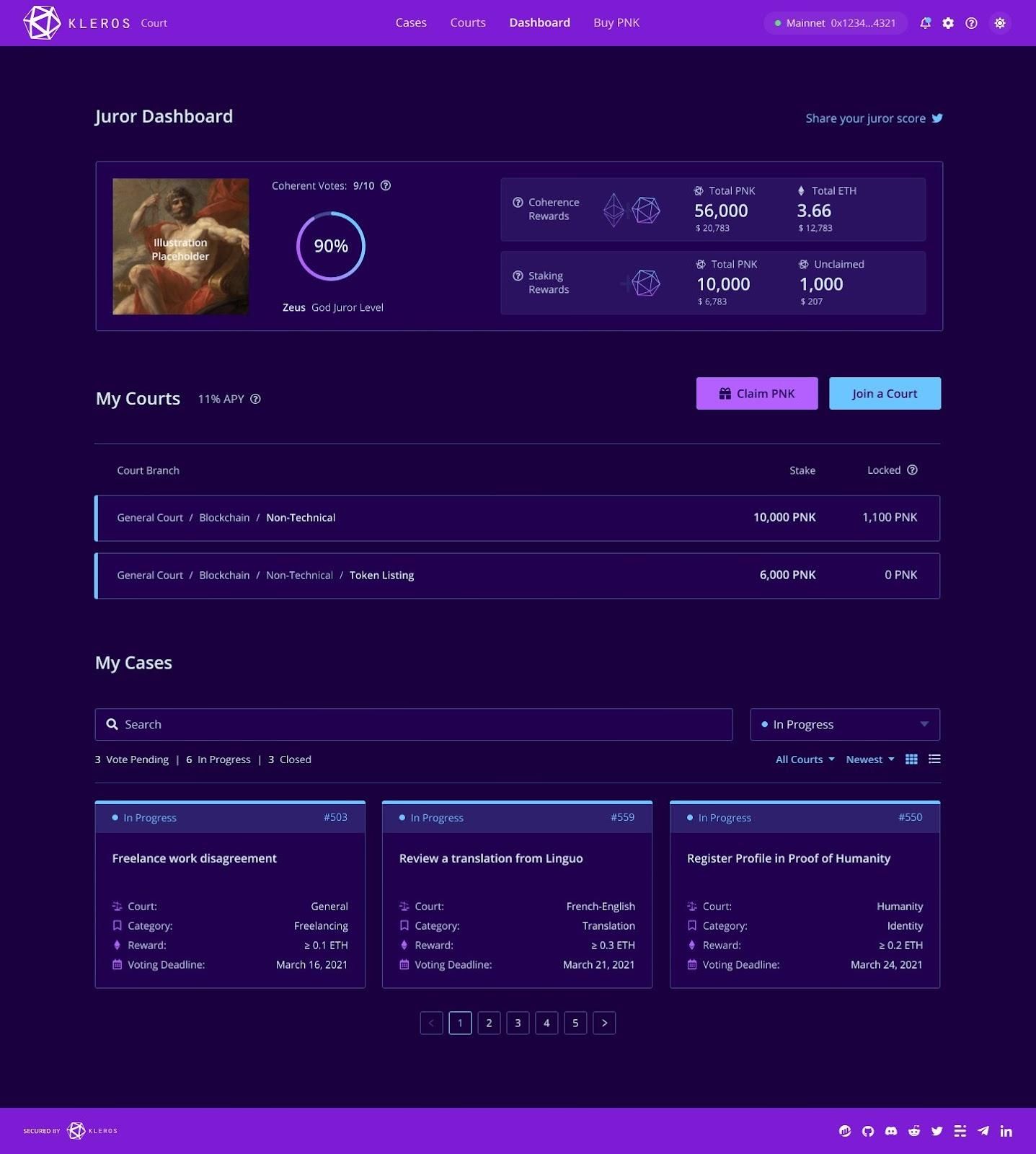
For an in-depth overview of the architecture of Kleros 2.0, read this article: Kleros 2.0: Scaling from 1,000 to 1 Billion Cases.
What Comes After the Launch
Technology Development
Thanks to its modular design, in the future, new functionalities to the court will be added through modules. The team will keep developing dispute kits, adding more sophisticated decision making logic in order to make Kleros work in a wider number of cases.
Examples of innovations enabled by dispute kits include:
- New drawing probability models beyond purely PNK-weighted, for example allowing every addresses to have the same probability of getting drawn regardless of stake size.
- Sophisticated drawing mechanisms which are too complex to execute onchain, but could be executed offchain and verified onchain. (Credits to Shotaro for this and for coining the term "Sortition Mining".)
- New RNGs, although it was already possible in v1.
For example, a one-person-one-vote court would be a combination of the following tools:
- Sybil-resistance with Proof of Humanity.
- A dispute kit with vote deduplication.
- A sortition module with equal drawing odds regardless of PNK holdings (not done at the current moment, but technically feasible).
- A privacy protection layer to avoid the doxxing of jurors (ZK badges like Sismo are part of this solution).
A Wider Strategy
Kleros is a B2B protocol that provides services to the wider Web3 ecosystem and beyond. Kleros operates as a marketplace that connects a side that demands dispute resolution services (integrated partners) and a side that supplies those services (jurors).
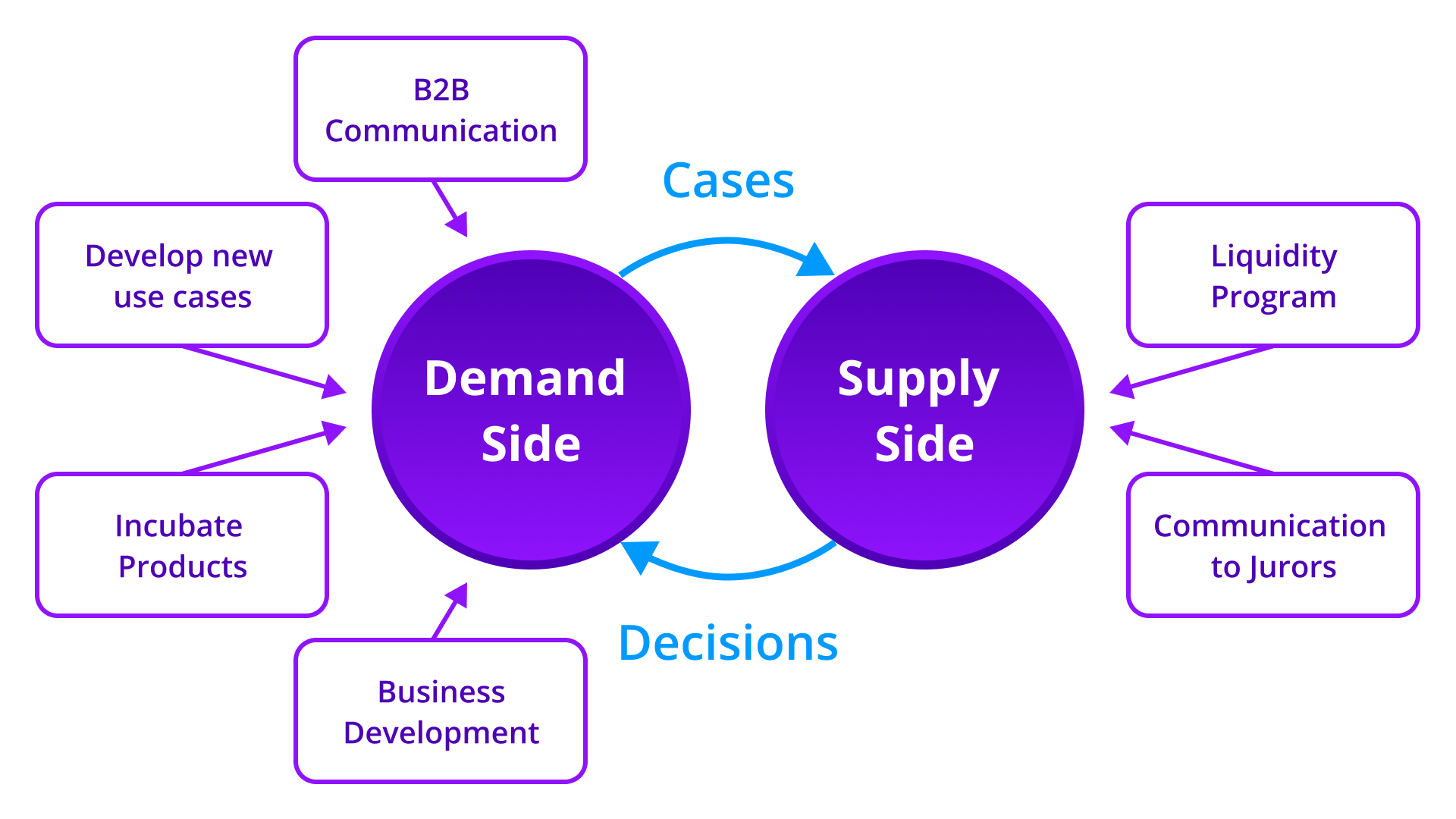
A key metric is the amount of integrations. More integrations bring more cases and value secured, which creates more opportunities for jurors to work. This increases the jury pool which will result in a better service (cheaper, faster and higher quality resolution) for partners which then bring more cases and jurors.
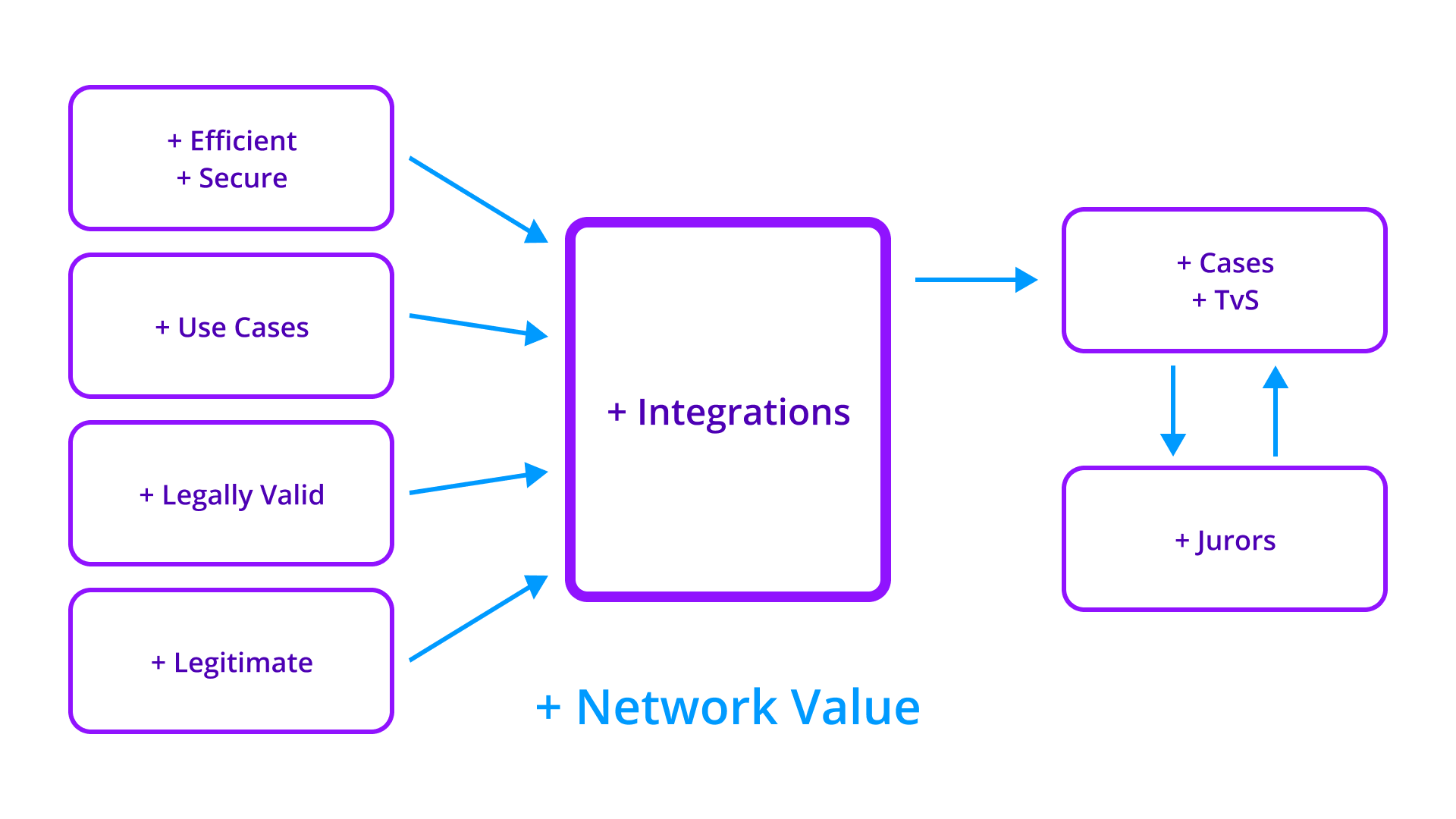
In order to have more integrations, we need Kleros to:
- Become more efficient and secure (Kleros 2.0 solves this due to reduced cost of operation),
- Address more use cases (Kleros 2.0 brings more sophisticated decision making logic and cross-chain capabilities which are important friction points in V1).
- Be legally valid (Kleros 2.0 partially solves this as it enables courts with white listed jurors, which might be a legal requirement in some jurisdictions and use cases).
- Be perceived as more legitimate (Kleros 2.0 partially solves this as systems of one-person-one-vote are seen as more legitimate in some use cases).
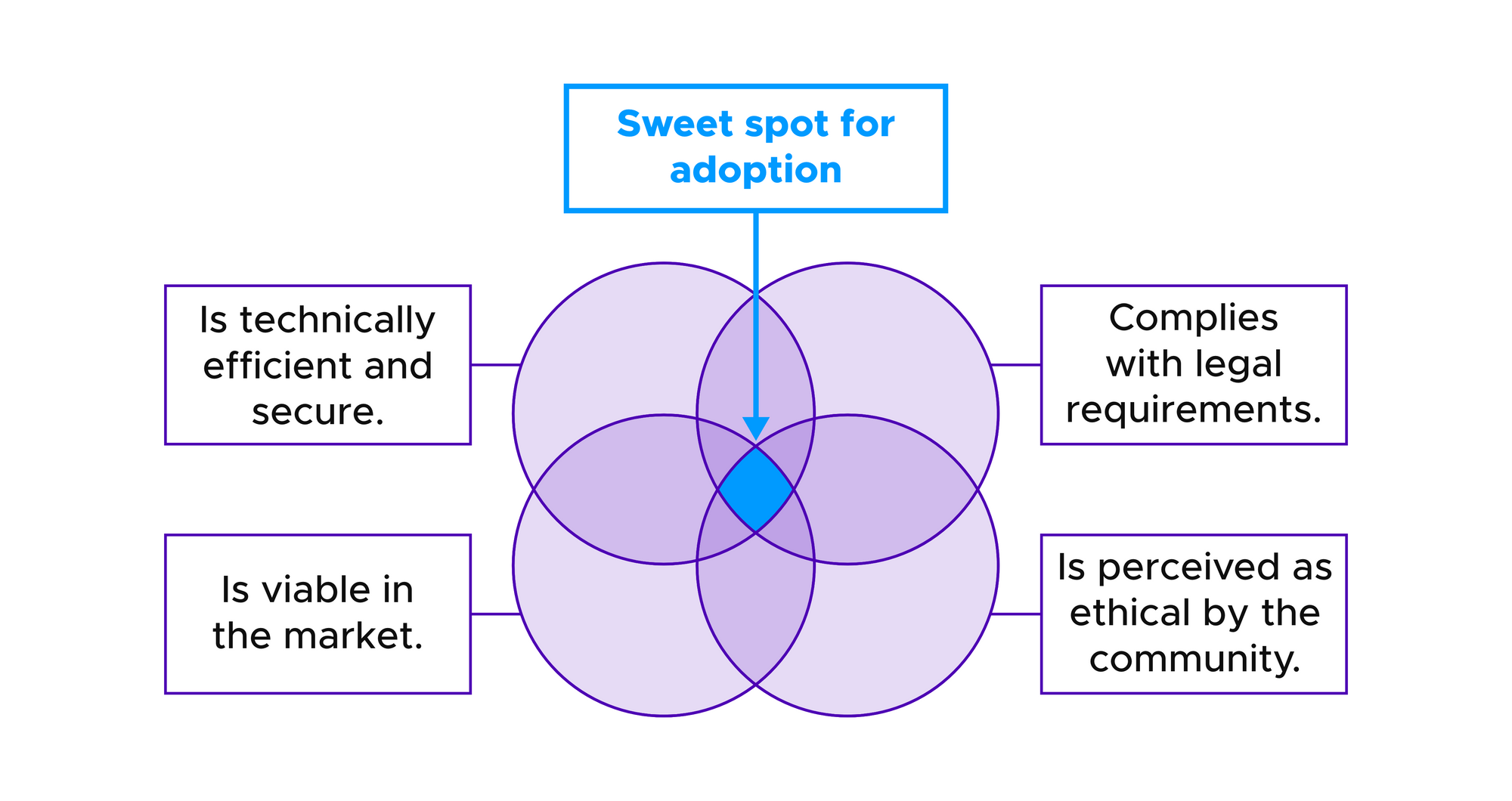
Up to this point, our main concern was the demand side of the marketplace (how to get more cases). The launch of Kleros 2.0 will give us a great boost in that area. As more cases come to Kleros, we will have a stronger focus on the supply side of the marketplace, that is, how to bring more jurors.
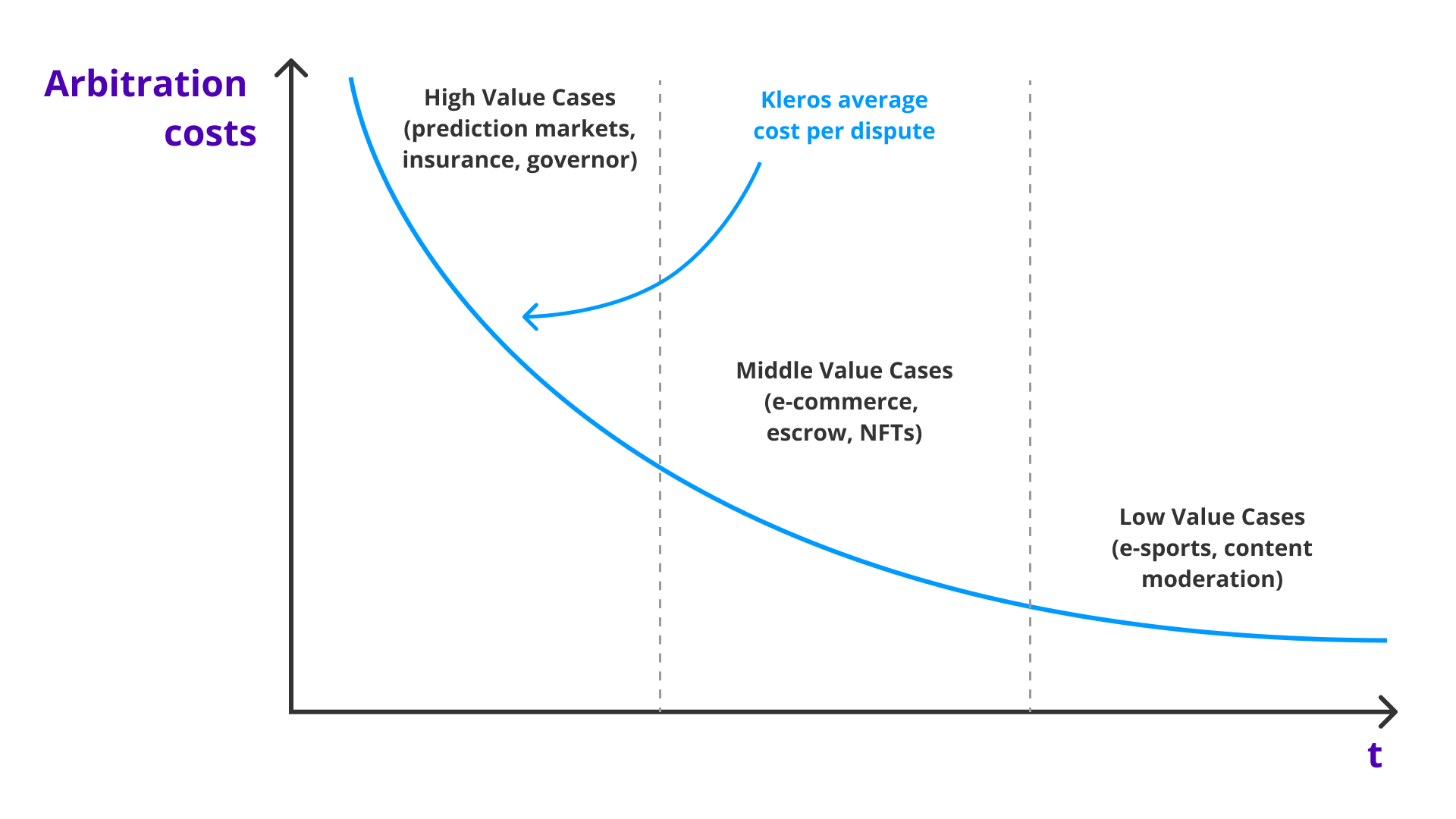
Community Development
As the court starts receiving a higher number of cases, a larger number of jurors will be necessary to resolve them. This will require more community development activities in order to recruit jurors and onboard them on the court.
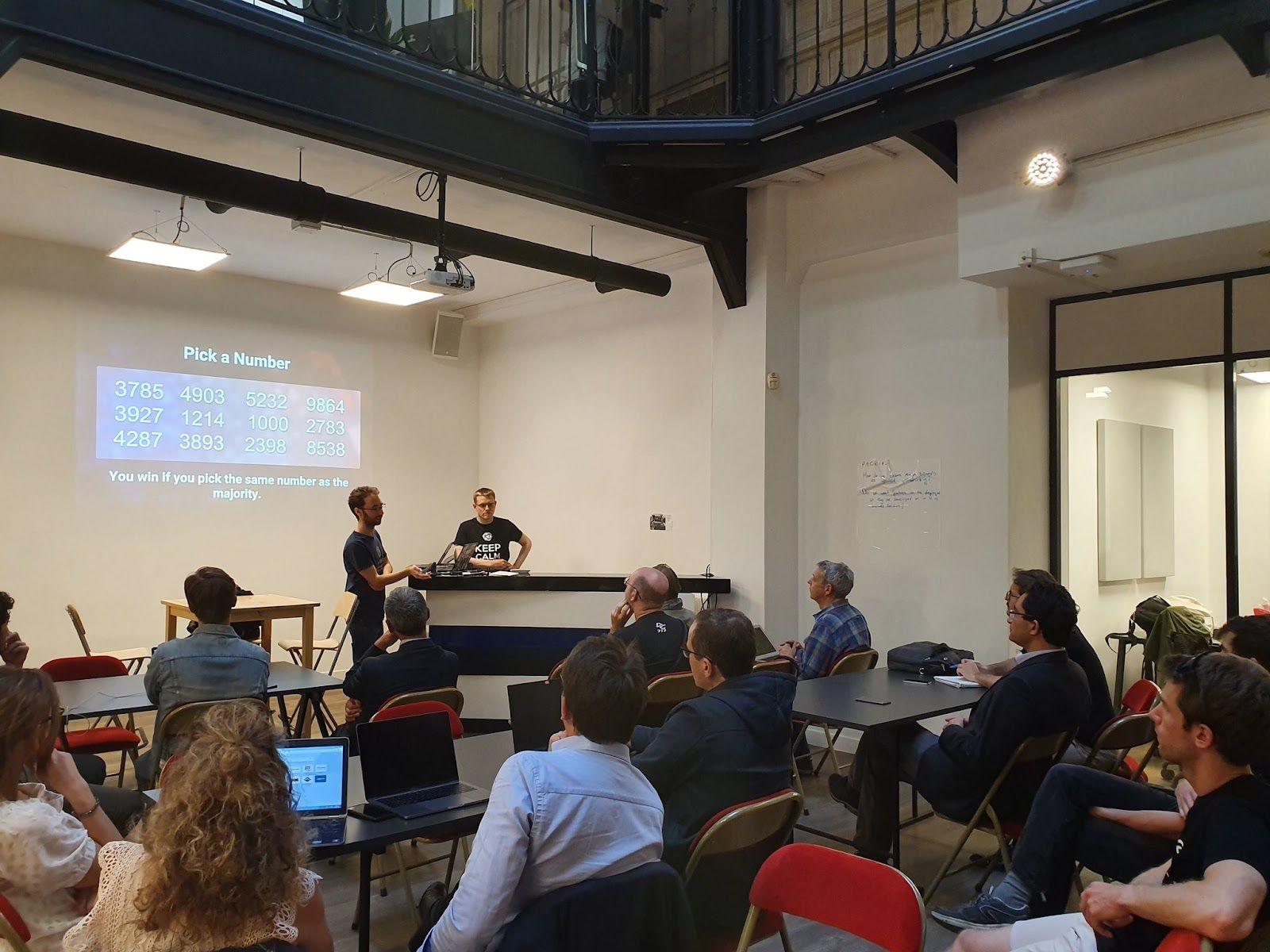
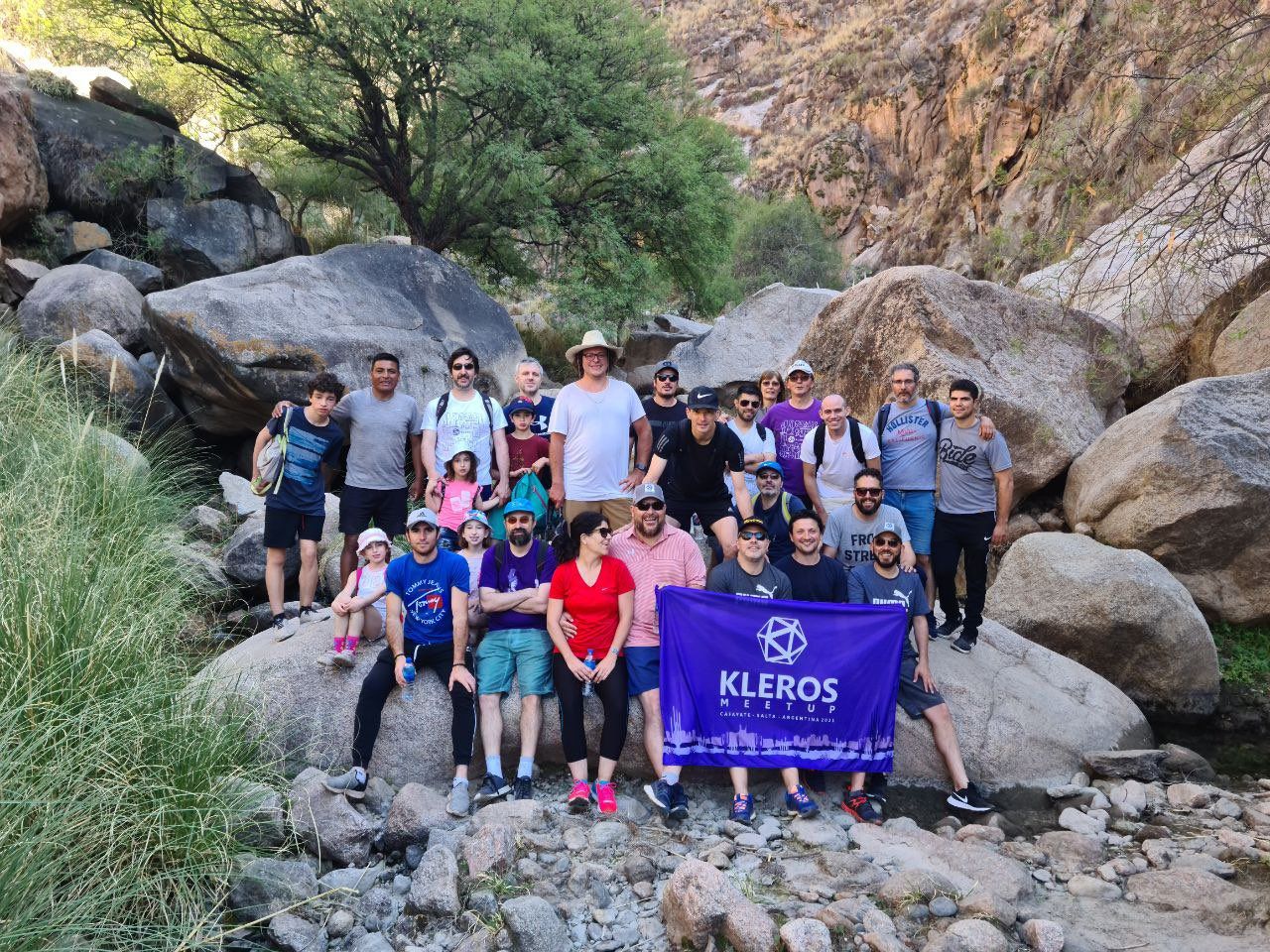
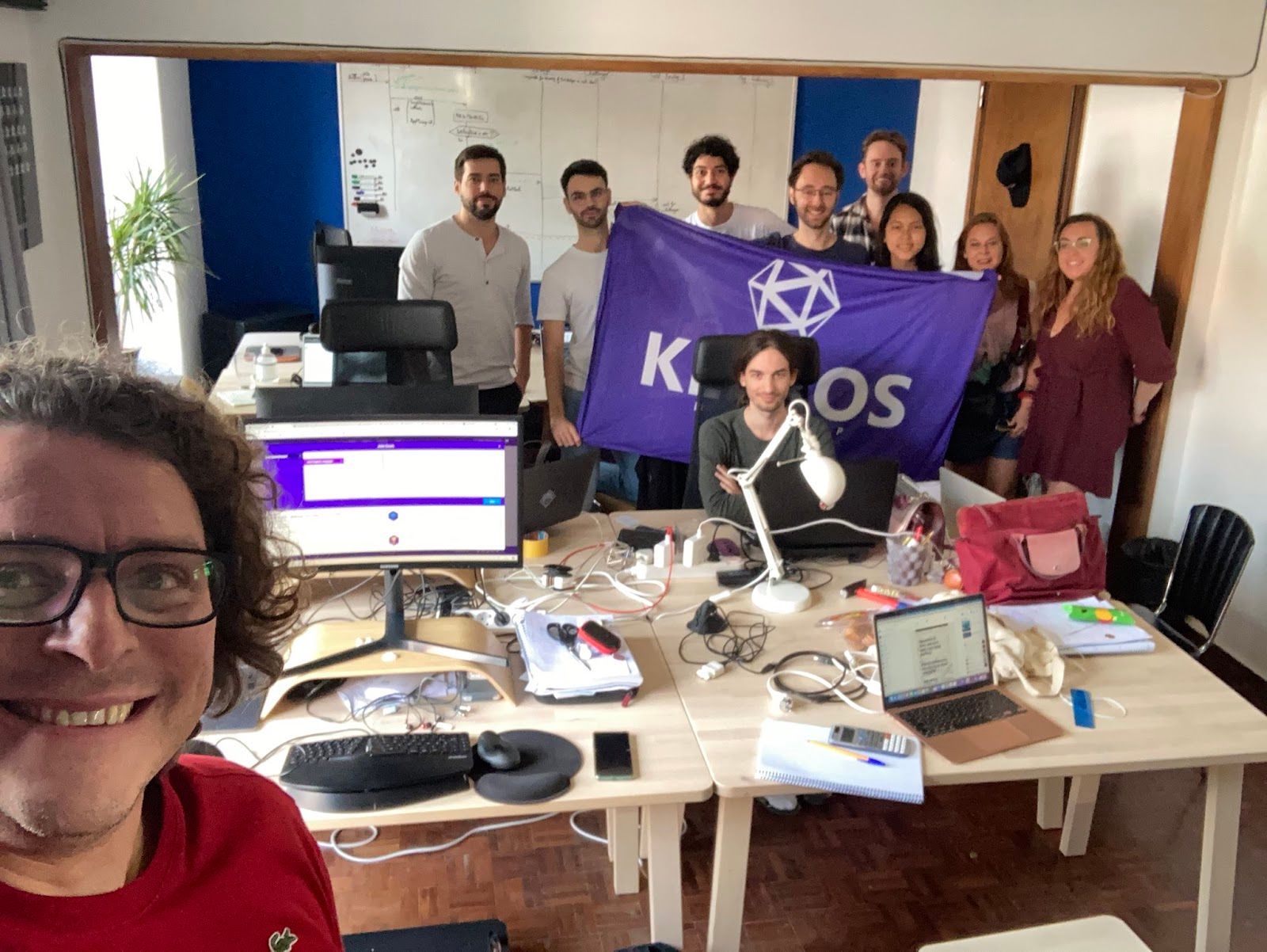
Hello @EthereumDenver pic.twitter.com/YAFFLZobYS
— shotaro (@shotaronowhere) February 28, 2023
We at @Kleros_io ended the @token2049 week with an awesome boat cruise+dinner next to 🇸🇬’s Supreme Court. So glad so many partners and friends came to join us!🥰
— Guangmian Kung (@daisugist) September 30, 2022
/WE_LOVE_THE_PARTIES 🍻⛴🌮🏛 pic.twitter.com/6wwDFiX1oT
The best team in Web3 pic.twitter.com/s2mSH6dB6k
— Federico Ast (@federicoast) July 20, 2023
Ecosystem Development
Kleros is a a decentralized court system for Web3 and a big part of our work is to find new integrations. The flexibility we will have from Kleros 2.0, coupled with cross-chain functionality will help us integrate a wider number of blockchain platforms.
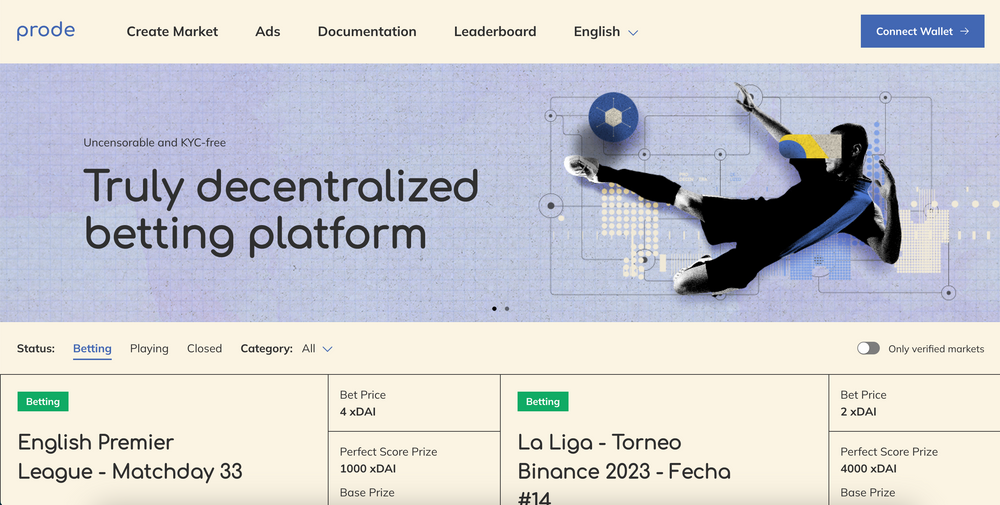
The Kleros protocol can also be used to help resolve cases in the mainstream economy, for example Web2 companies and consumer claims. In Web2 use cases, the enforcement of rulings does not happen on-chain in an automatic way and this brings some extra complexity.
Since the early days of the project, we engaged with industry associations and regulators to address questions on the validity of decentralized justice rulings under traditional legal frameworks.
A unique implementation achieved during the customer discovery process was the concept of “asymmetric arbitration”, where a Kleros ruling is binding for the company but not for the user. From our preliminary research, this seems to resolve an important part of the legal uncertainty that mainstream companies have when considering the implementation of the Kleros protocol.
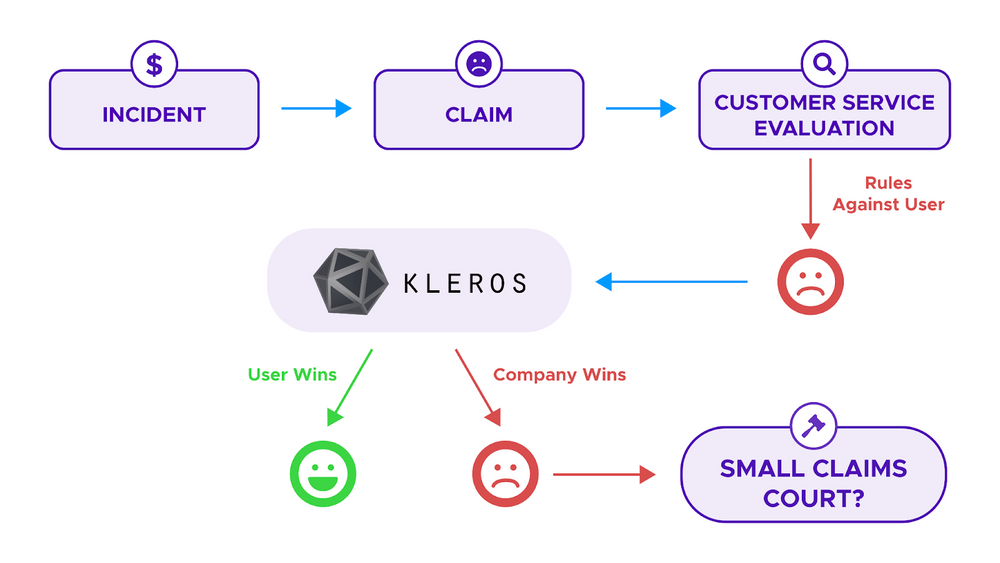
We also plan to explore other more flexible ways to implement Kleros into a wider range of dispute resolution opportunities such as the use of Kleros in mediation. To learn more, read "Kleros Mediation Bridge: A Cohesive Approach Blending Traditional Mediation and Kleros Blockchain Arbitration".
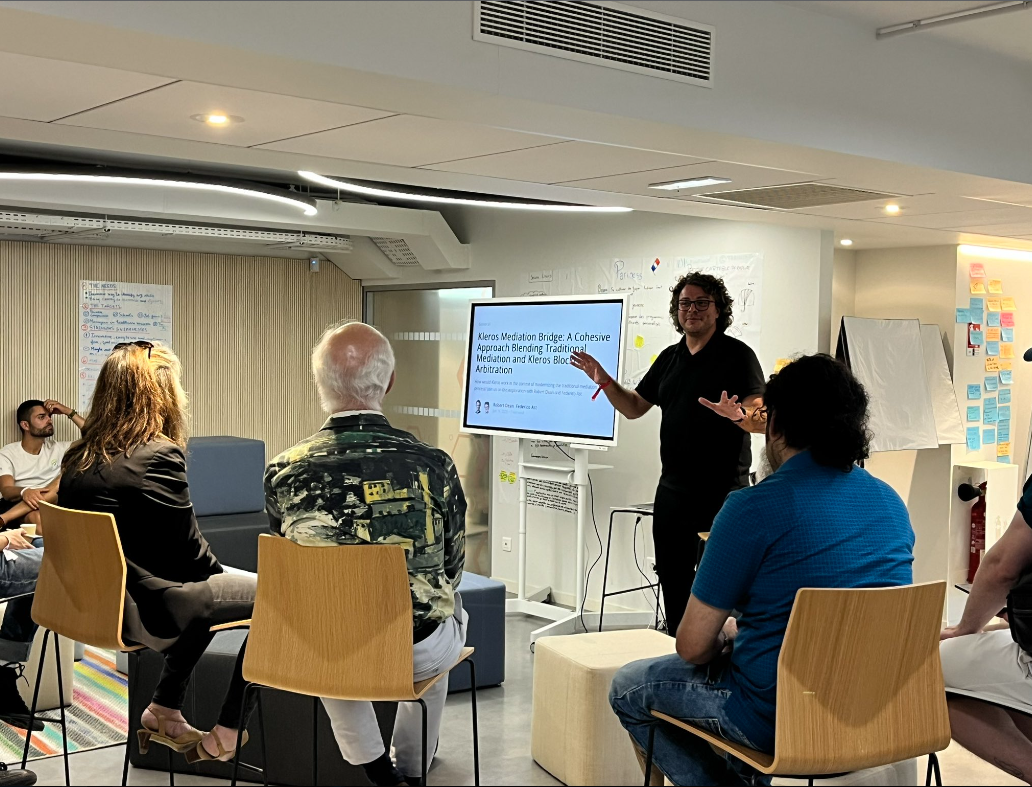
As the Kleros protocol consolidates, we can imagine a wider number of companies emerging in this ecosystem to help customers implement Kleros in a wider number of use cases.
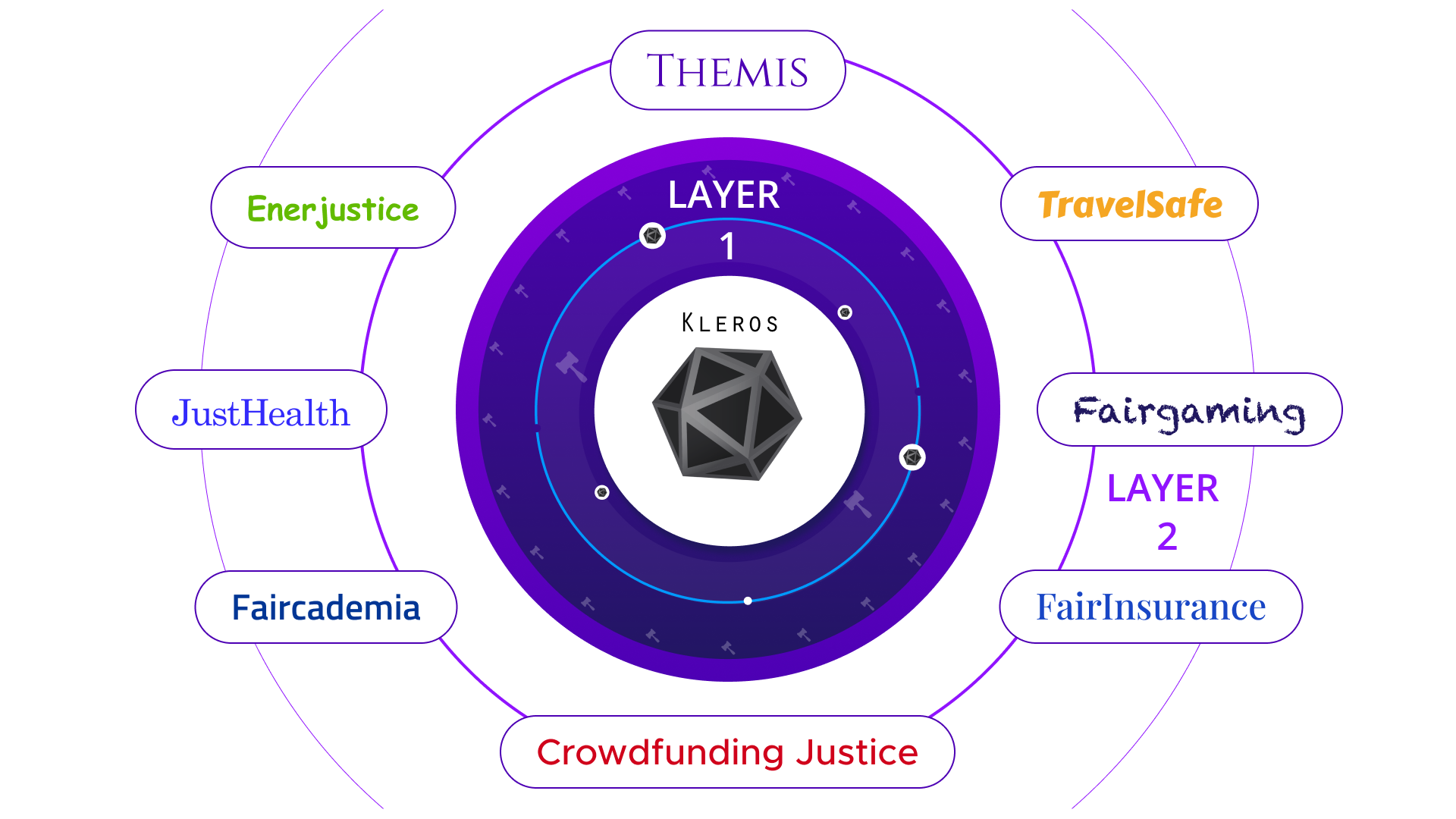
To learn more, check this article: "Kleros Layer 2: Decentralized Justice in the Mainstream World".
The Next Decade of Justice
Kleros 2.0 will be a point of inflection in the life of the project. Up until now, the main focus was building technology and legitimacy. Kleros is now an established brand and has developed very valuable technology.
Of course, we still actively sought integrations, but many blockers existed, from the lack of cross-chain compatibility, high resolution costs or the lack of more sophisticated decision making logics.
Kleros 2.0 with its modularity and dispute kits, took a long time to develop. The coming tech stack is being built in the expectation to last for a decade. Improvements will be made through modules on top of the basic infrastructure.
We don't know exactly what the future of disputes will be, but we want Kleros to be as flexible as possible to quickly accommodate. This is the basic infrastructure on top of which the next decade of online dispute resolution will be built.
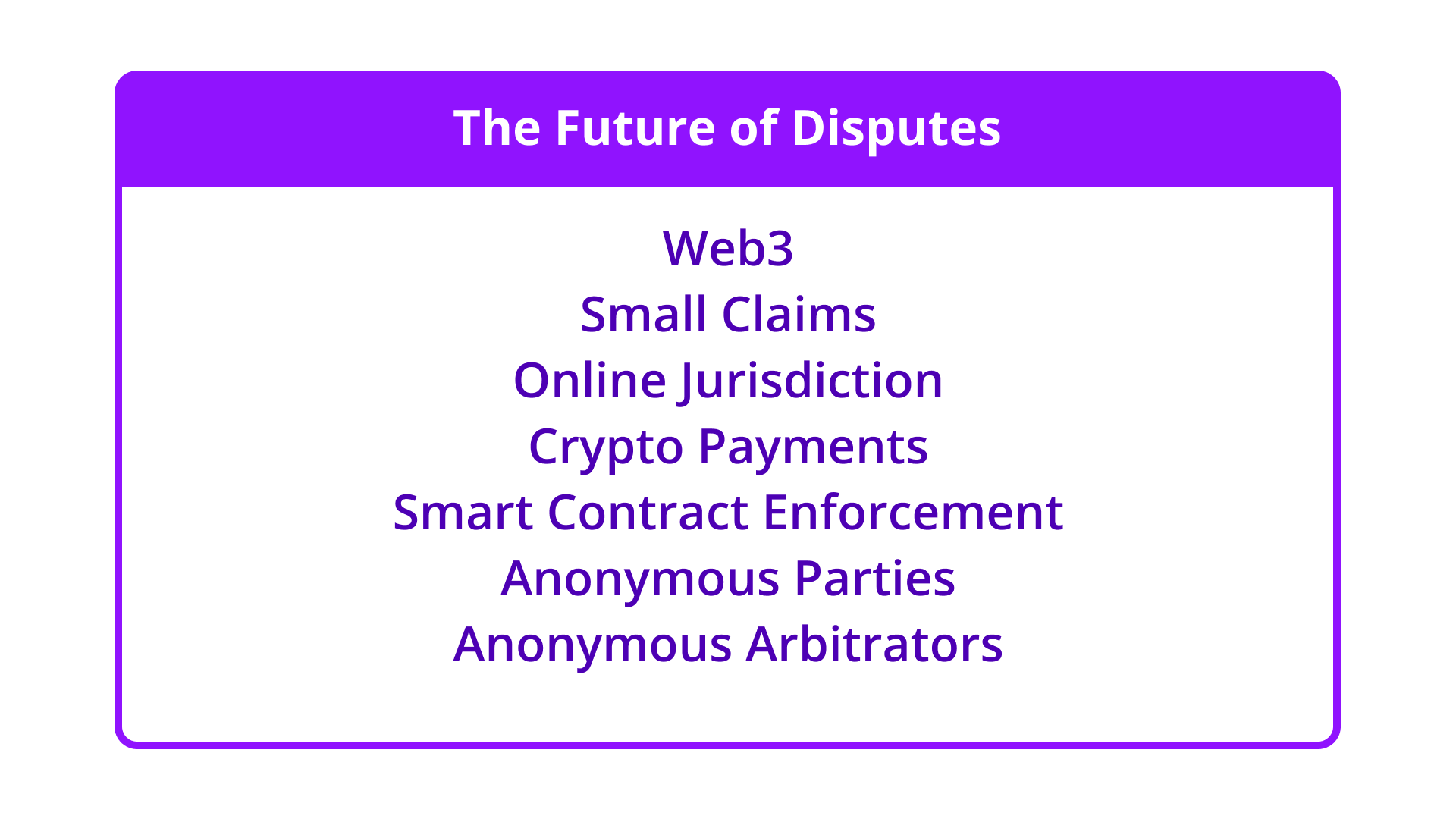
In due course, Kleros 2.0 might see the advent of AI judges and VR courtrooms. Back in 2017, we started thinking about dispute resolution of online contractors and jurors working from their smartphones.
Ten years from now, Kleros might look a bit more like this:
"Alice wakes up one morning with her VR set quietly buzzing on her head. She stretches her arms, stands up from her bed excitedly and steps into the spacious dressing room of her virtual mansion.
She is looking for her latest acquisition - a new dress she bought from Bob, a designer of grand reputation. The dress cost quite a lot of coins to tailor precisely according to her taste.
But her excitement quickly turns to disappointment as she finds out that the dress was absolutely not what she expected. She writes a strongly worded letter to Bob immediately, but to no avail. His prompt answer is that he did his job exactly according to her preferences.
In addition, he demands that she releases the second part of the payment from the escrow.
Not shaken by this act of defiance, she logs into the wall console, connects to the resident dispute resolution system and talks with a bot about her claim. After answering several standard questions, the case is swiftly sent to Kleros for resolution.
Carl is a self-aware bot earning his living by processing thousands of disputes in design. A small bleep on his internal display shows a new case to be adjudicated. He optimizes the amount of coins necessary to become a juror, feeds the coins into the platform and quickly swoops in to solve the case of the erroneous dress. The case was solved in Alice’s favour.
Two of the jurors were bots. Only one was human."
- Excerpt from Dispute Revolution: the Kleros Handbook of Decentralized Justice

